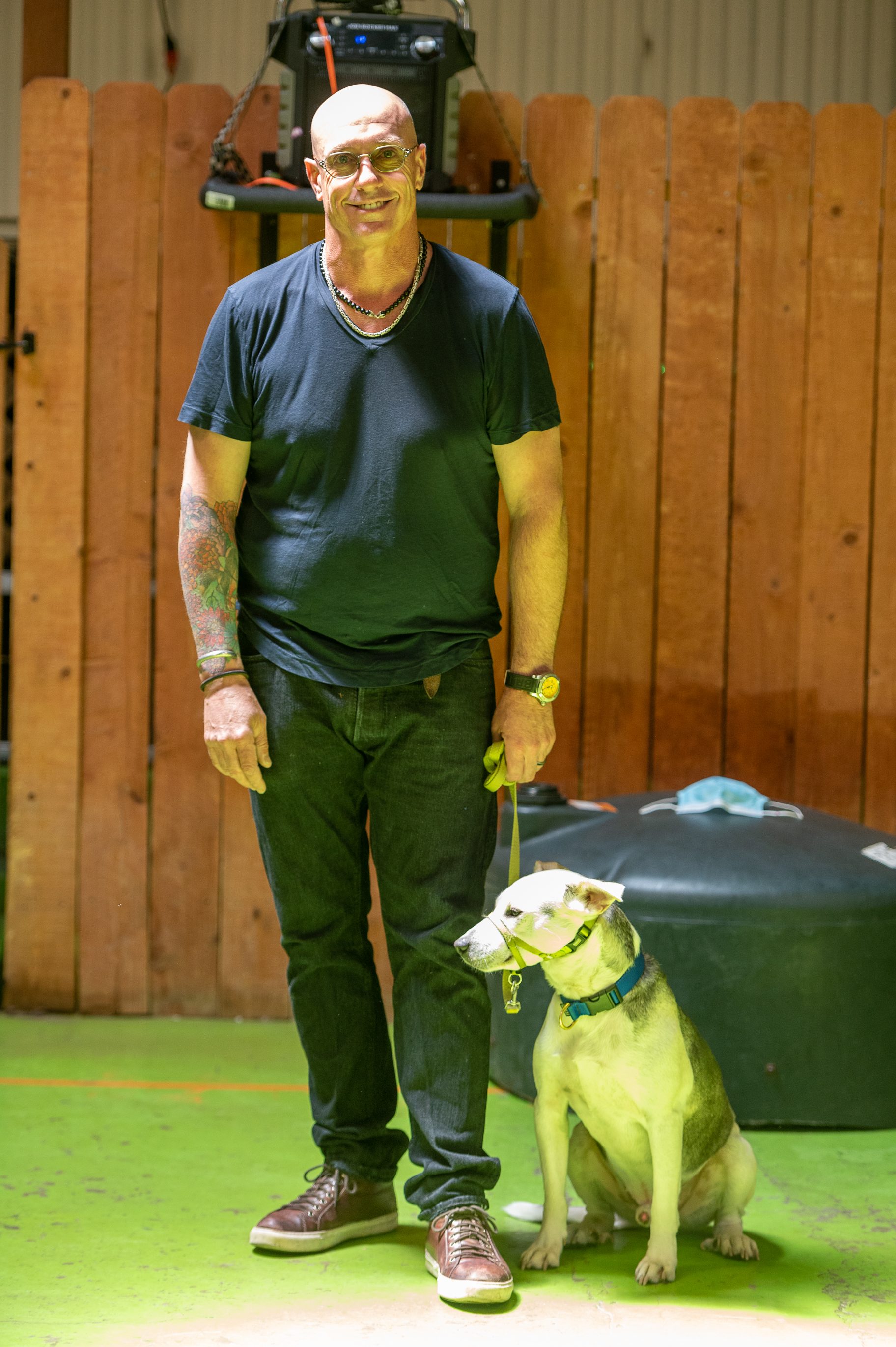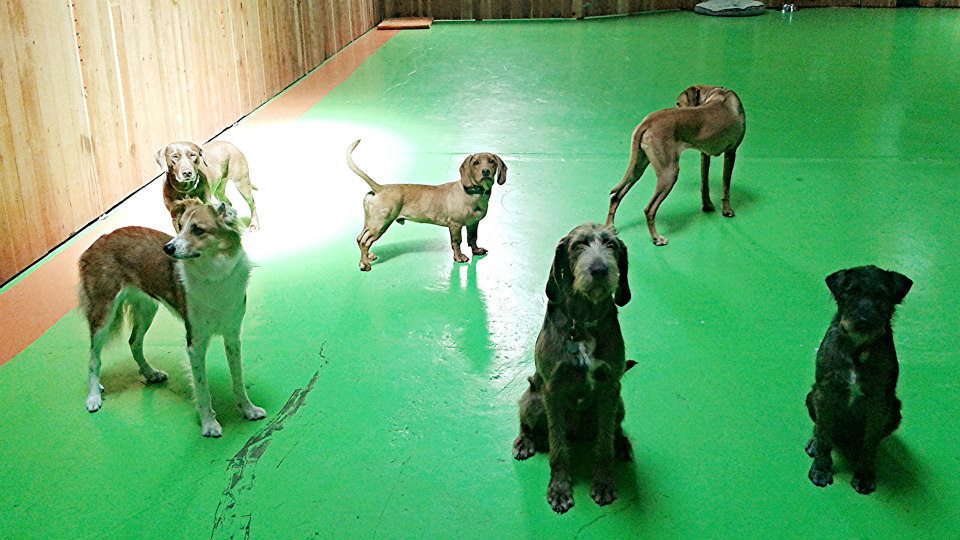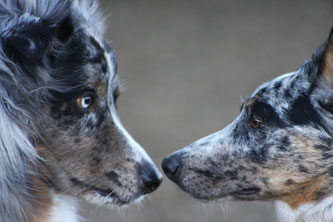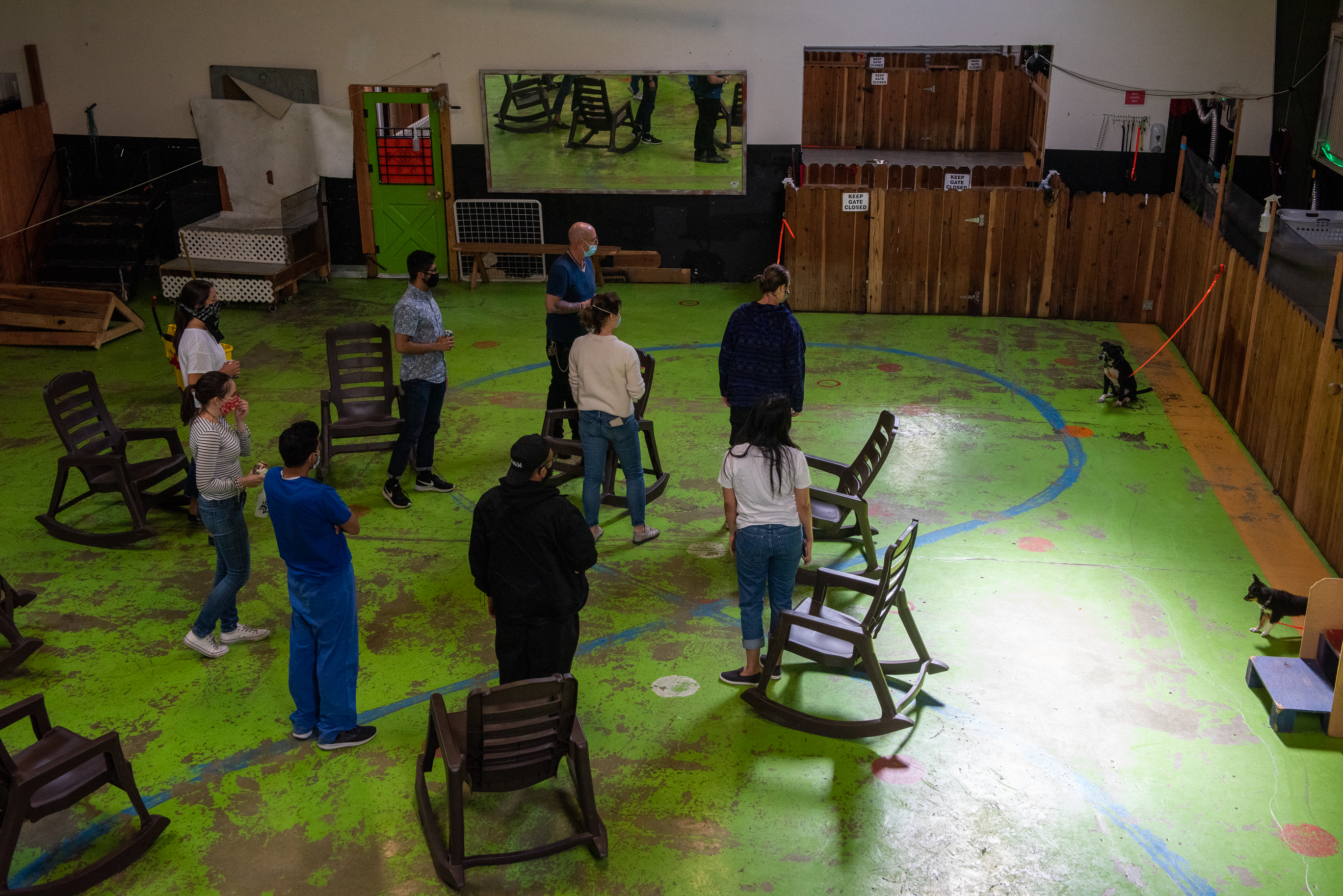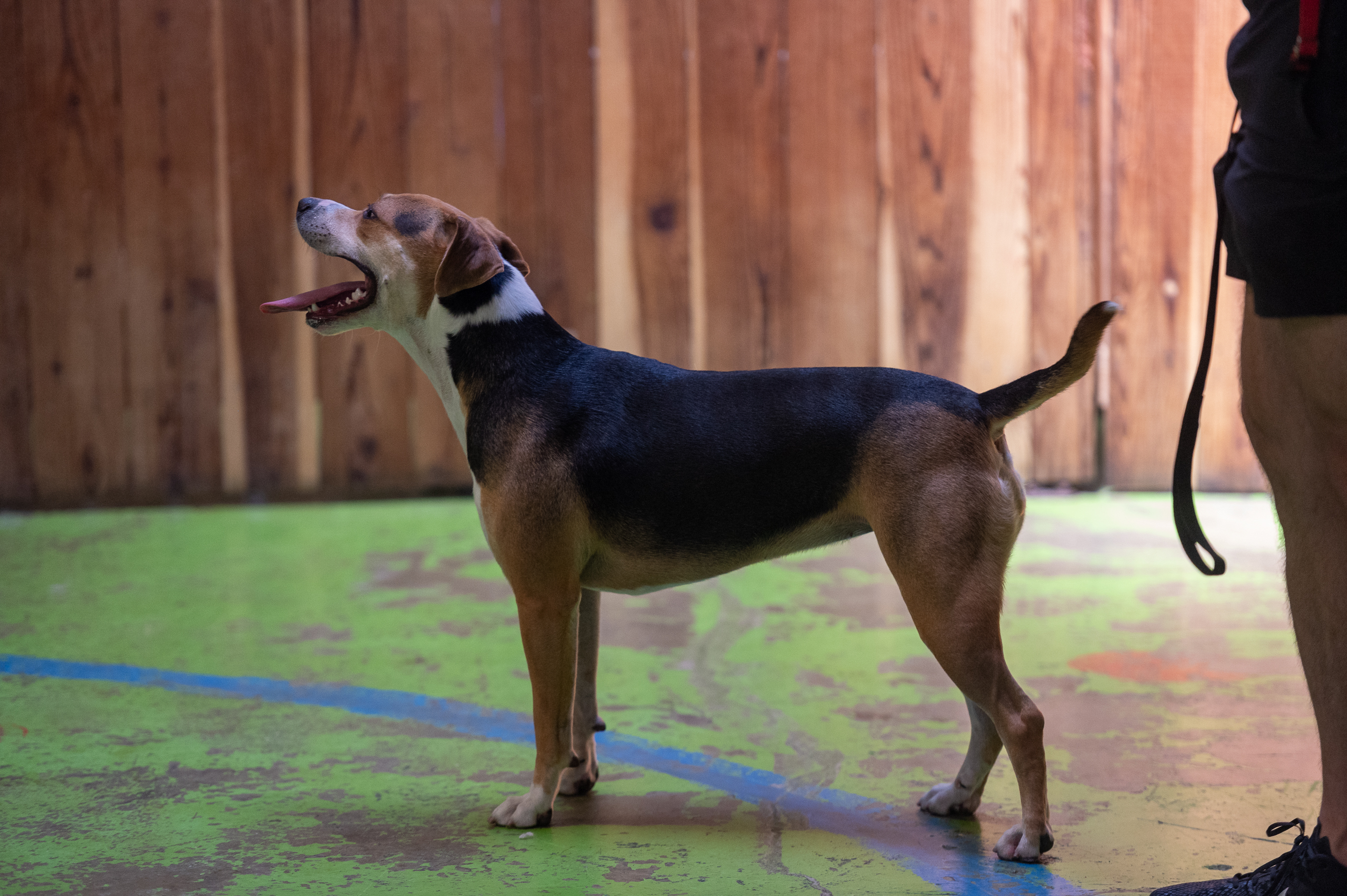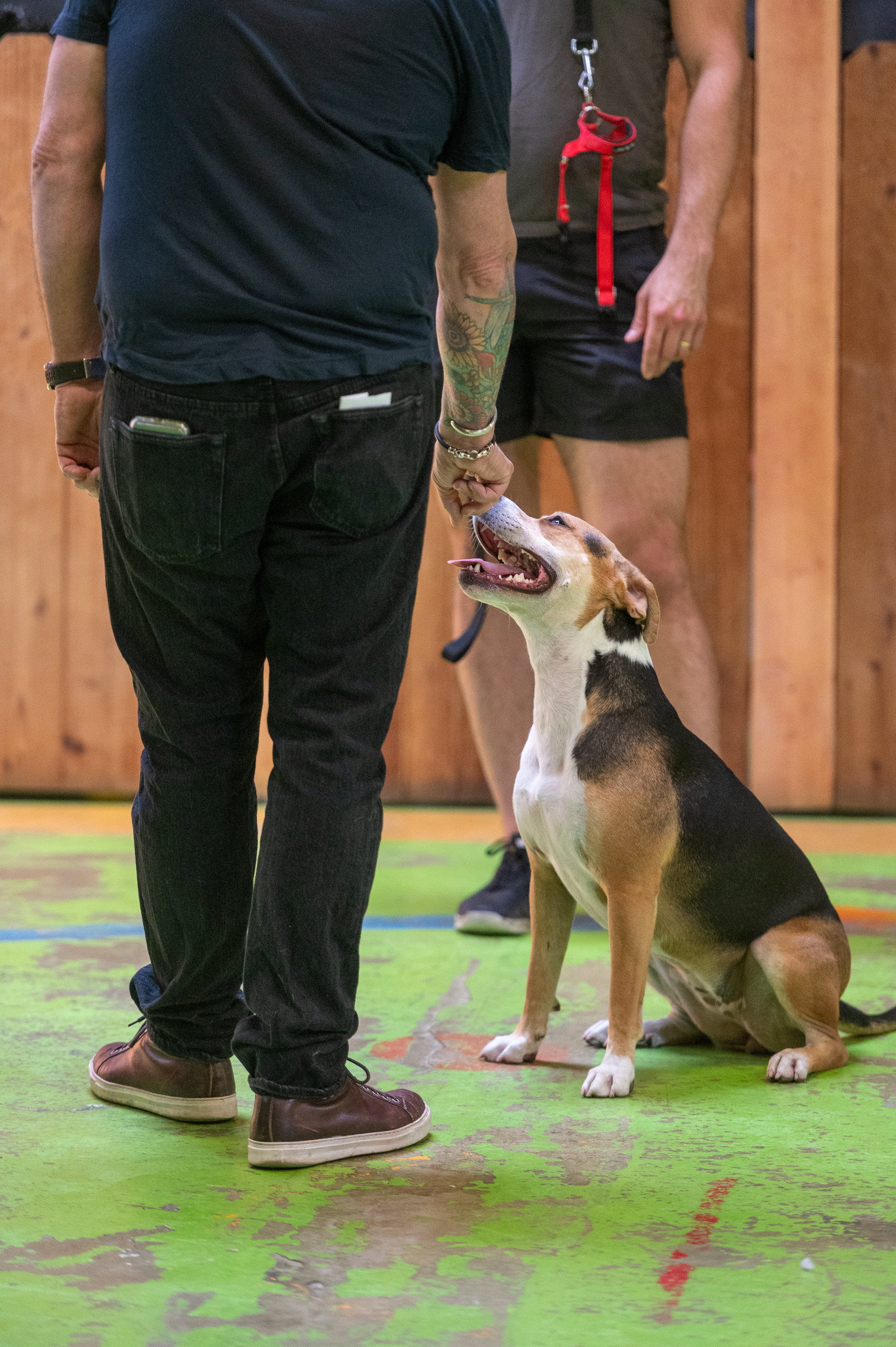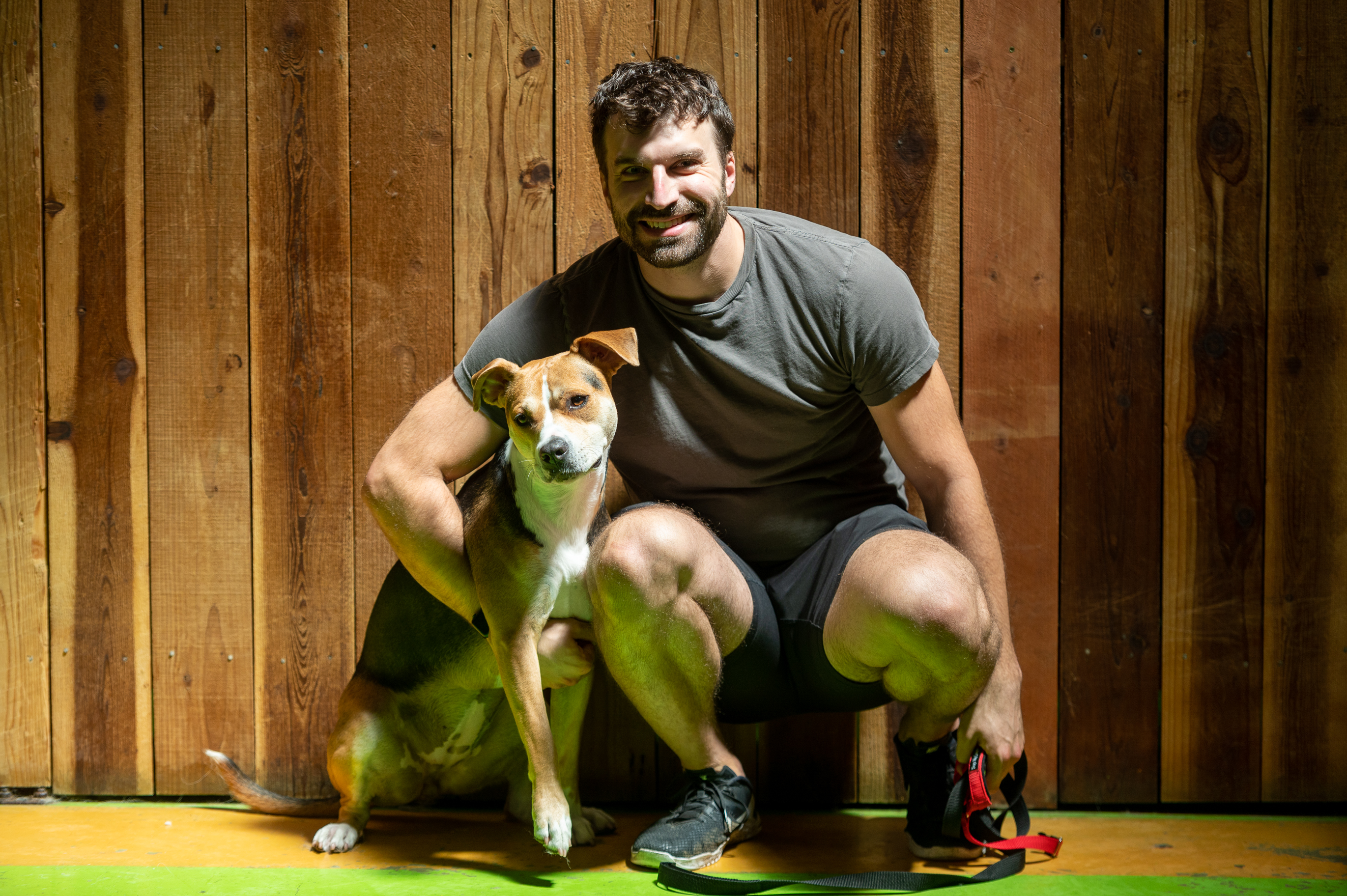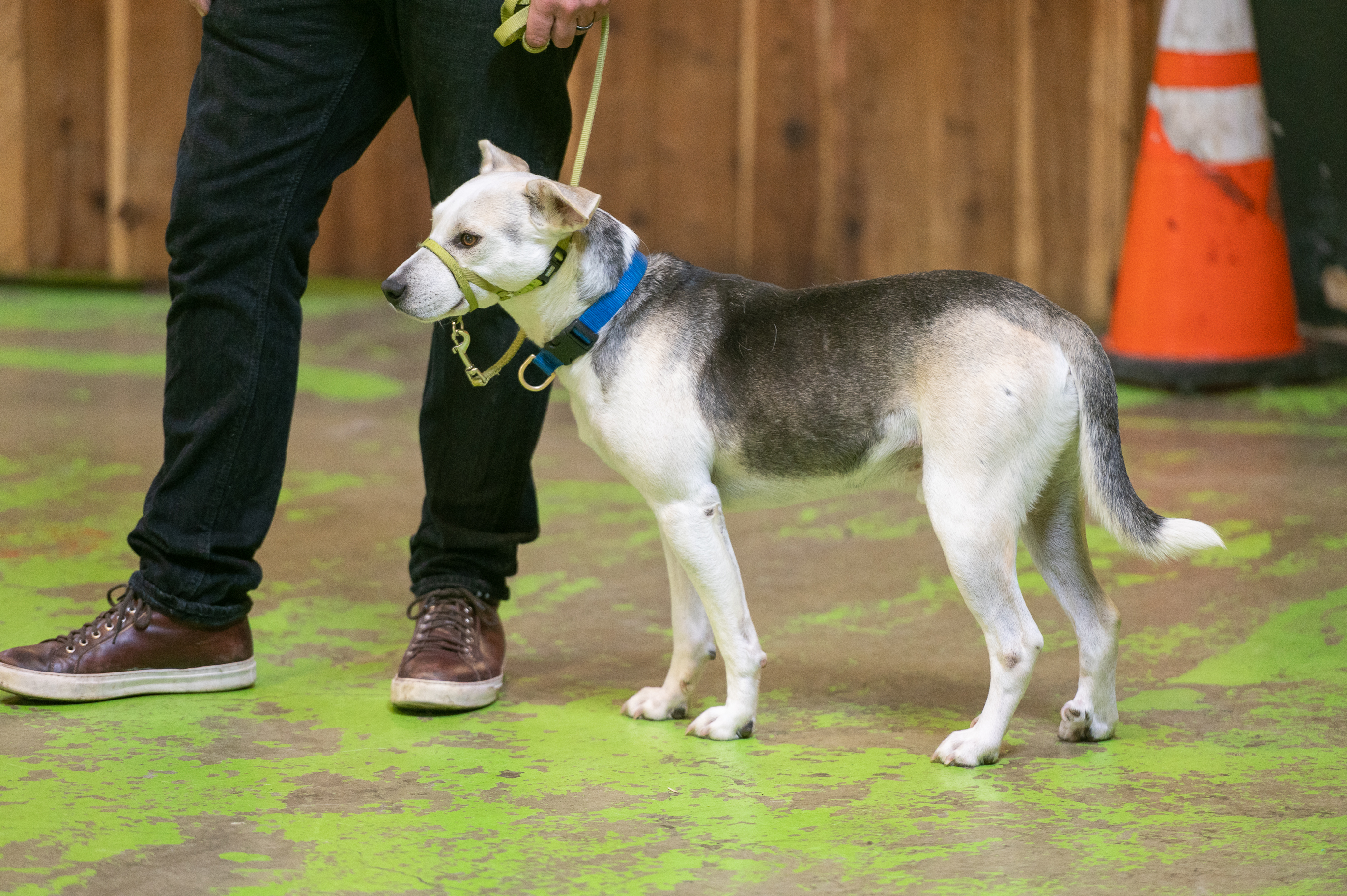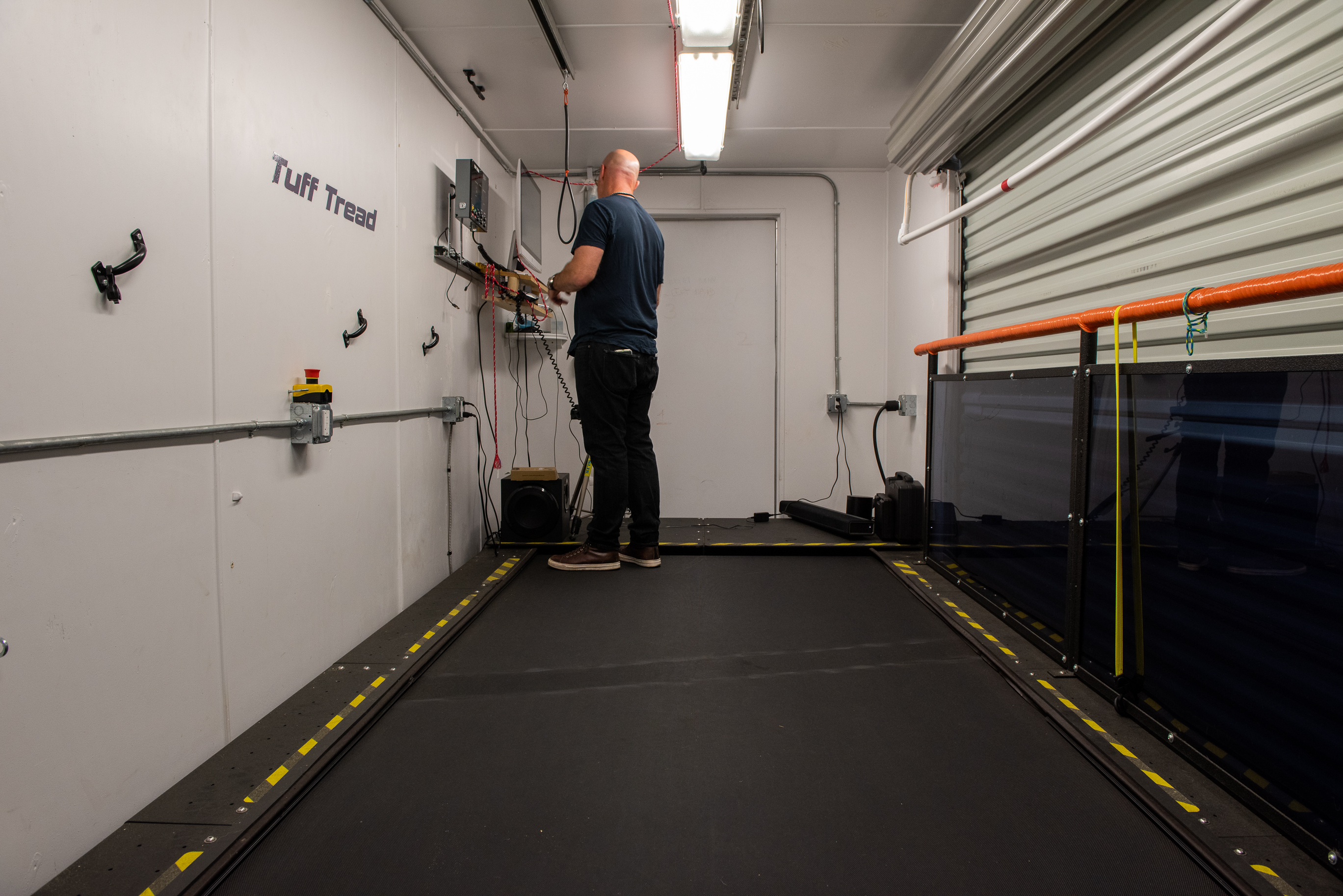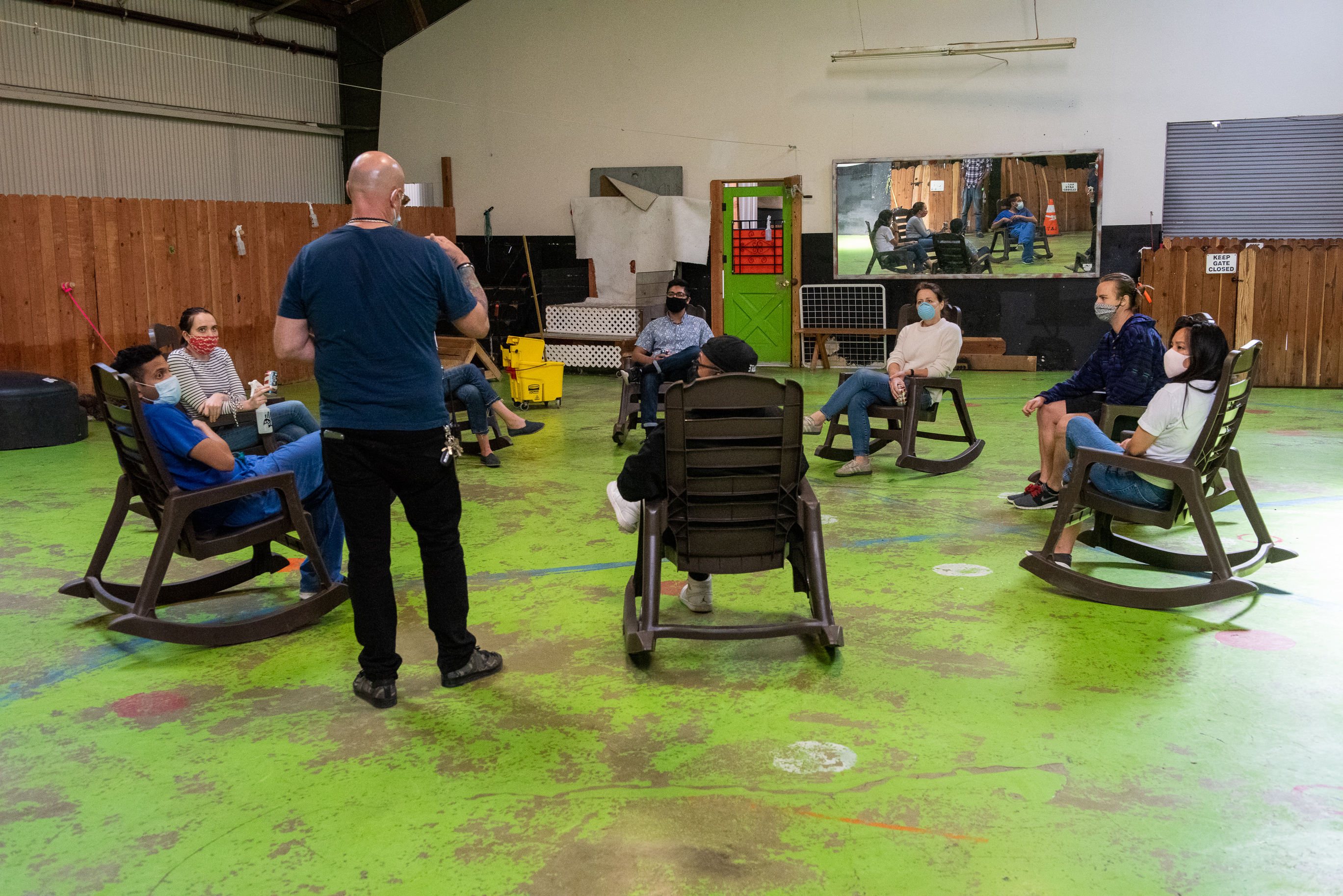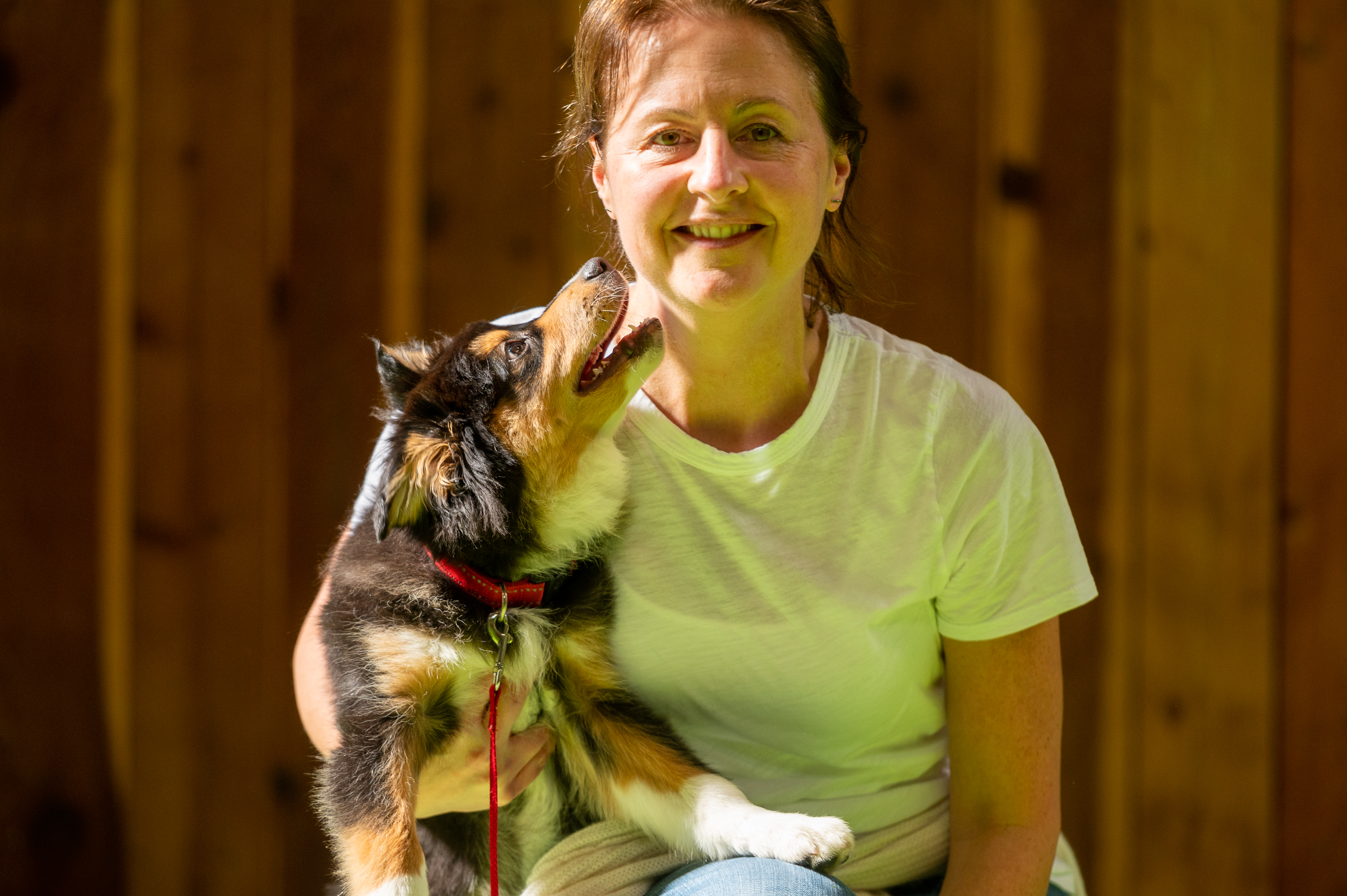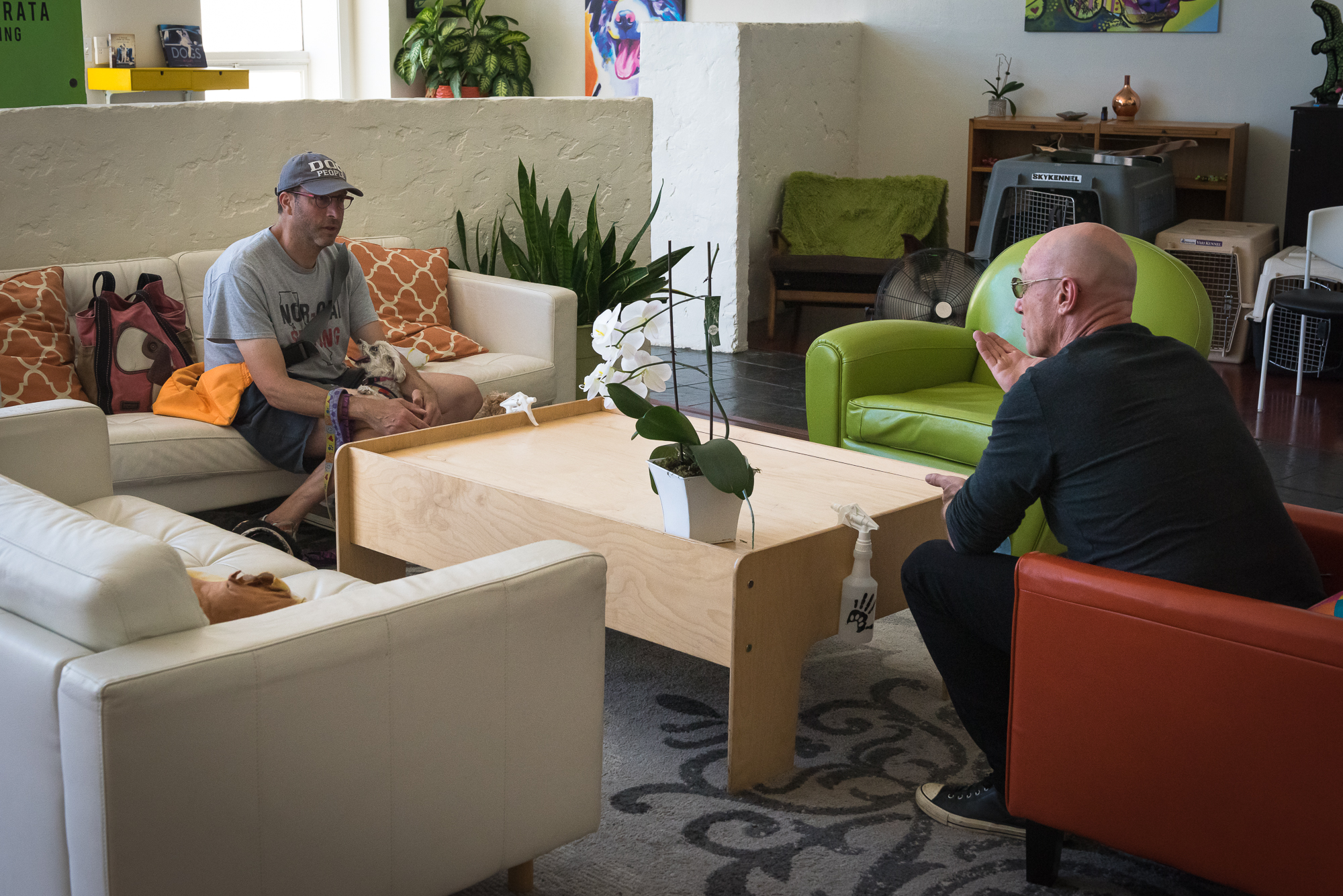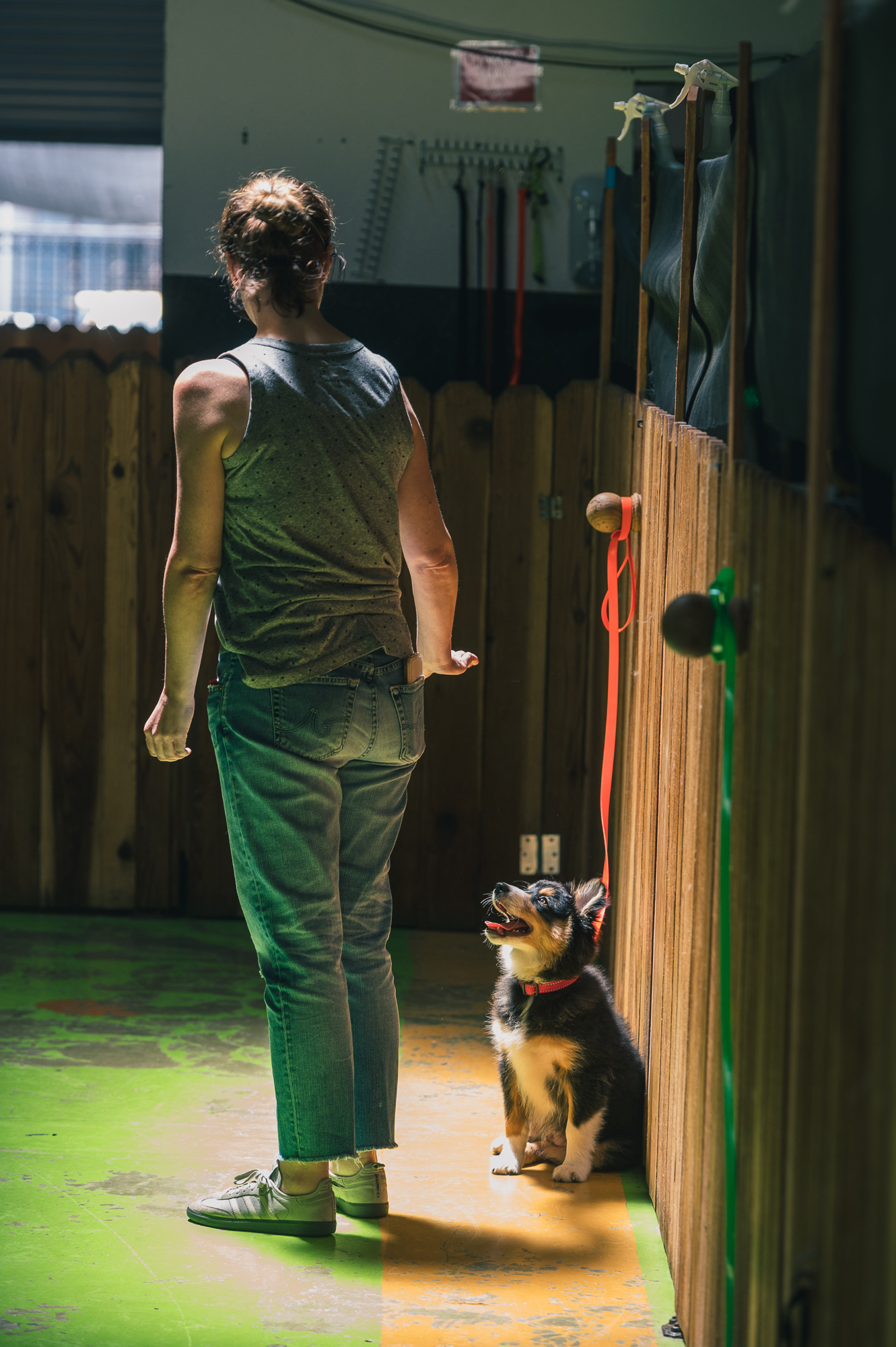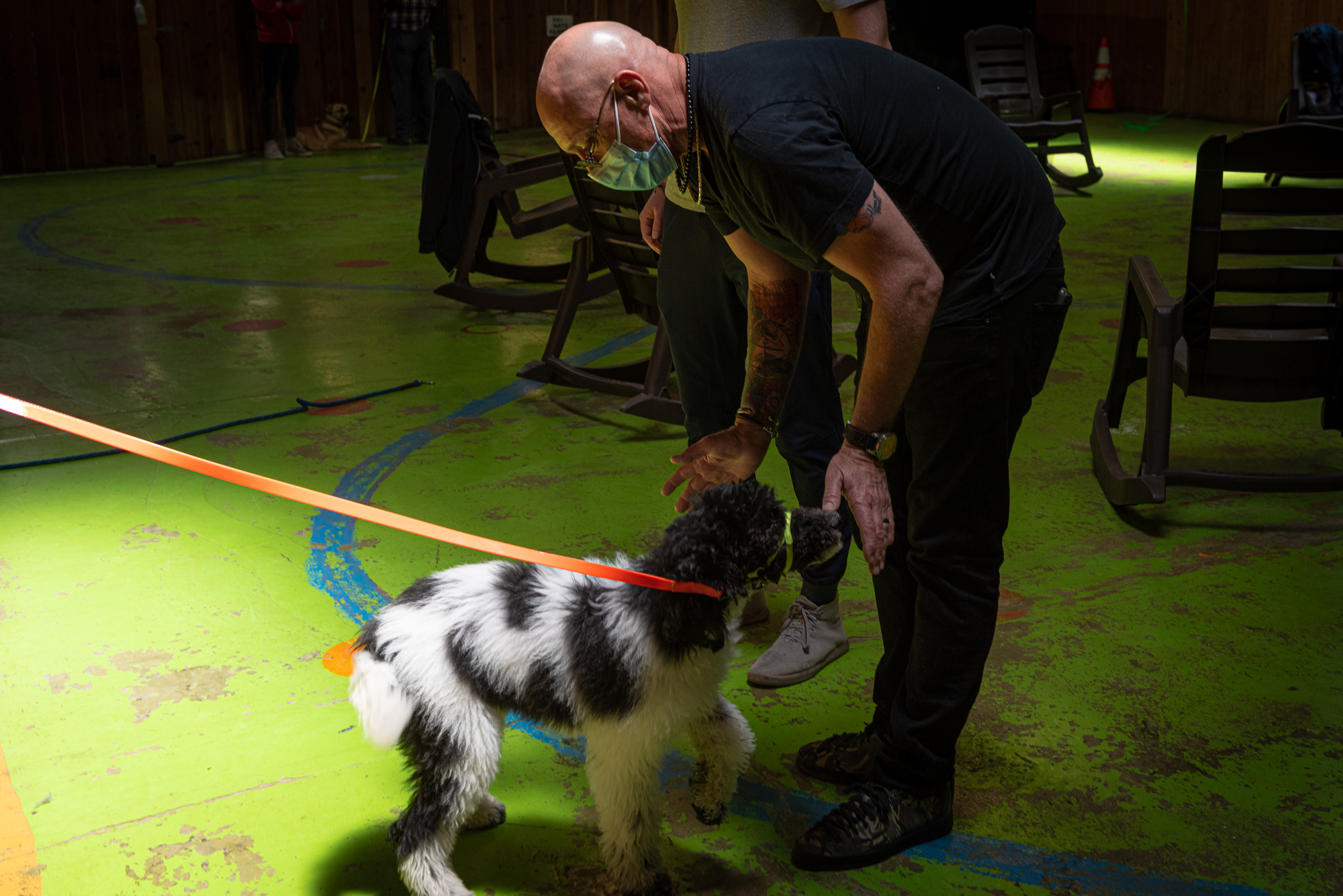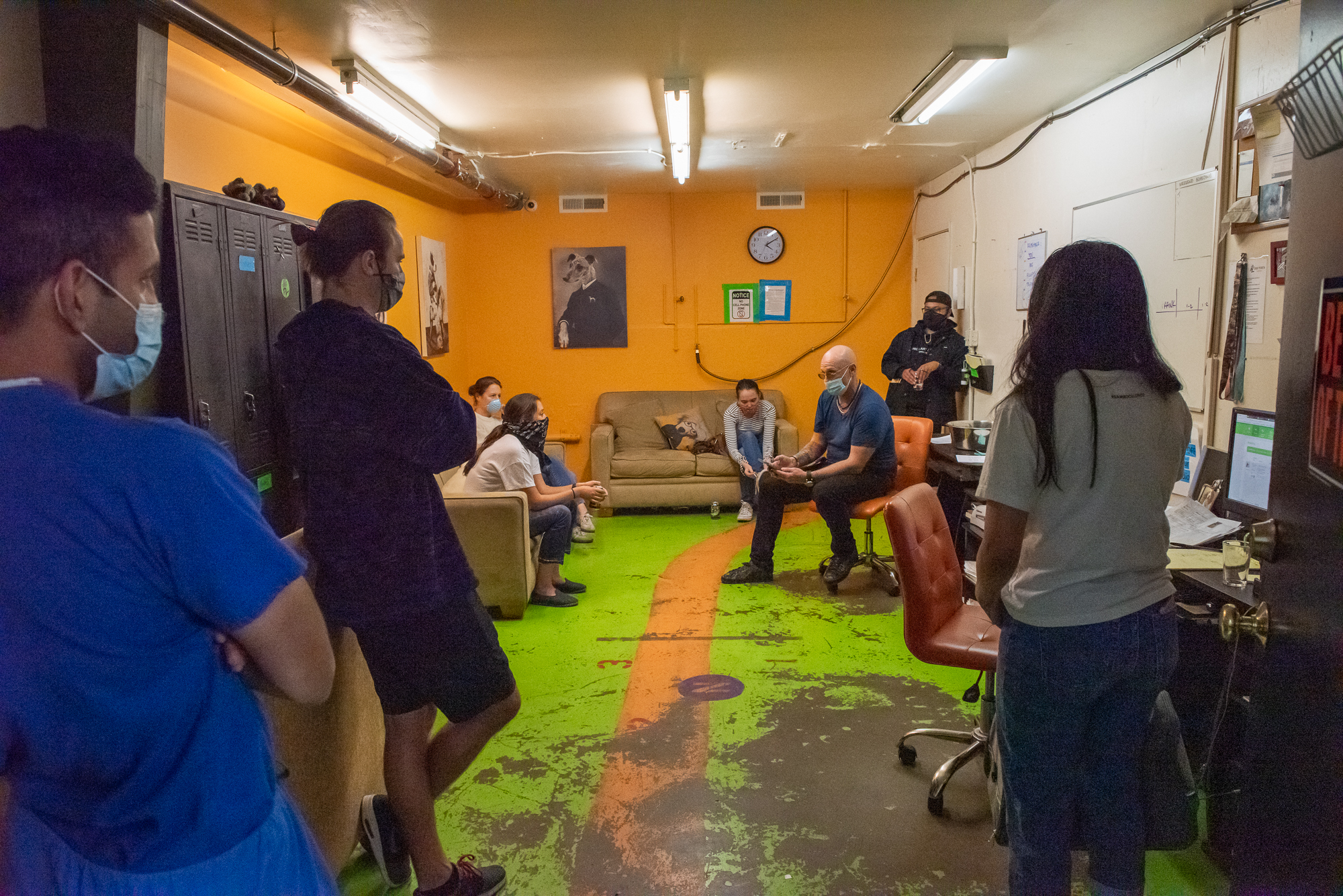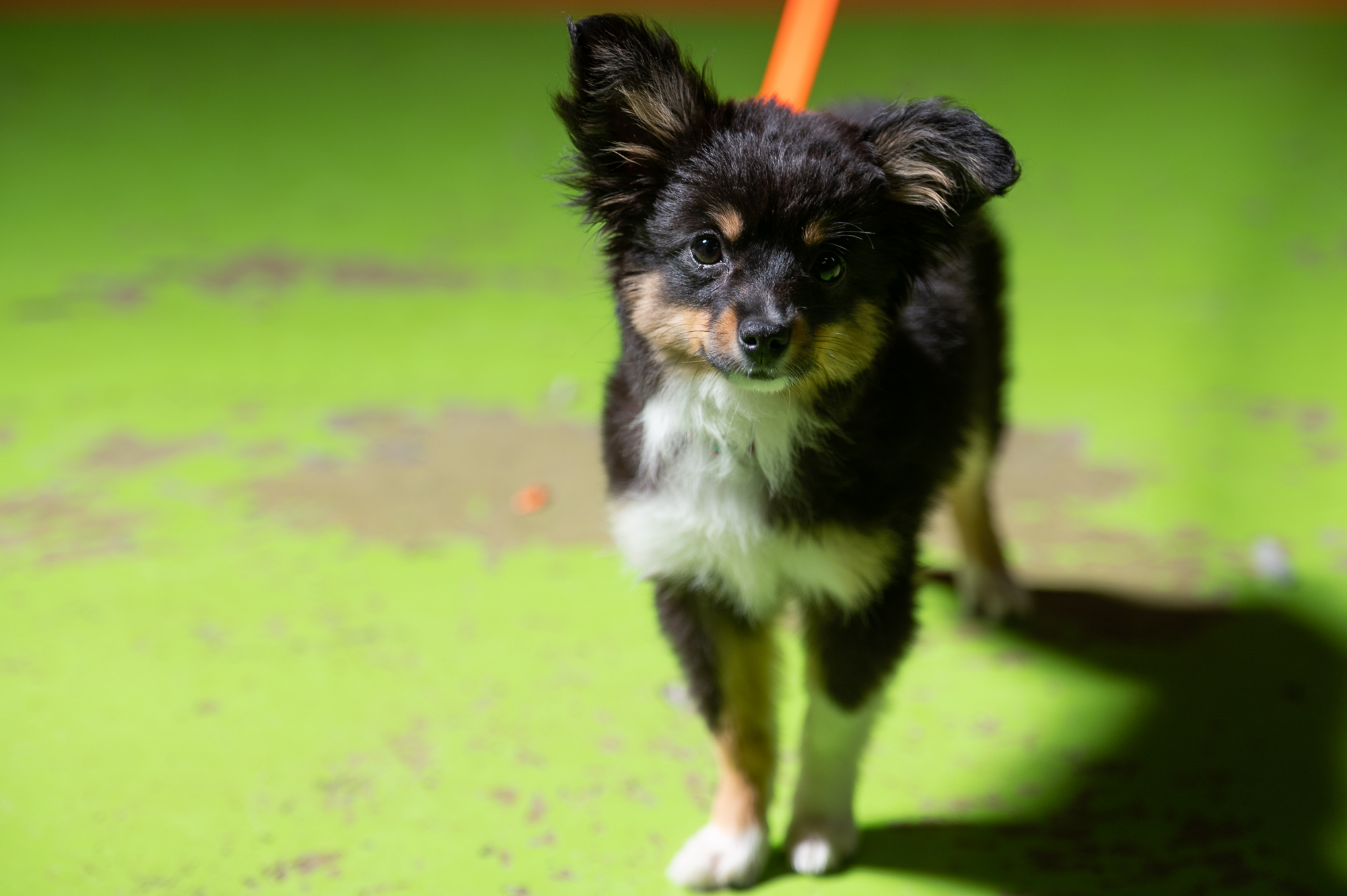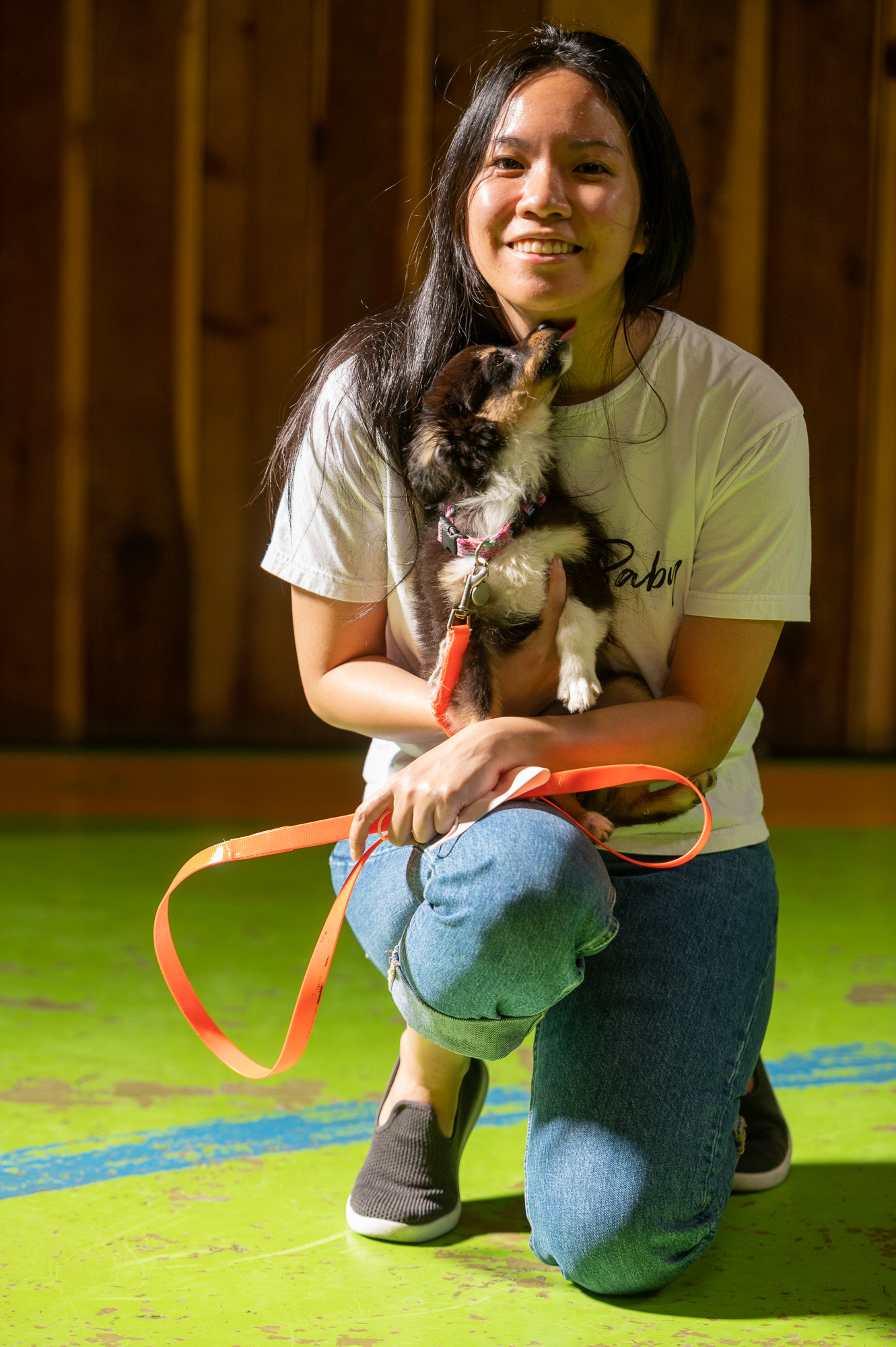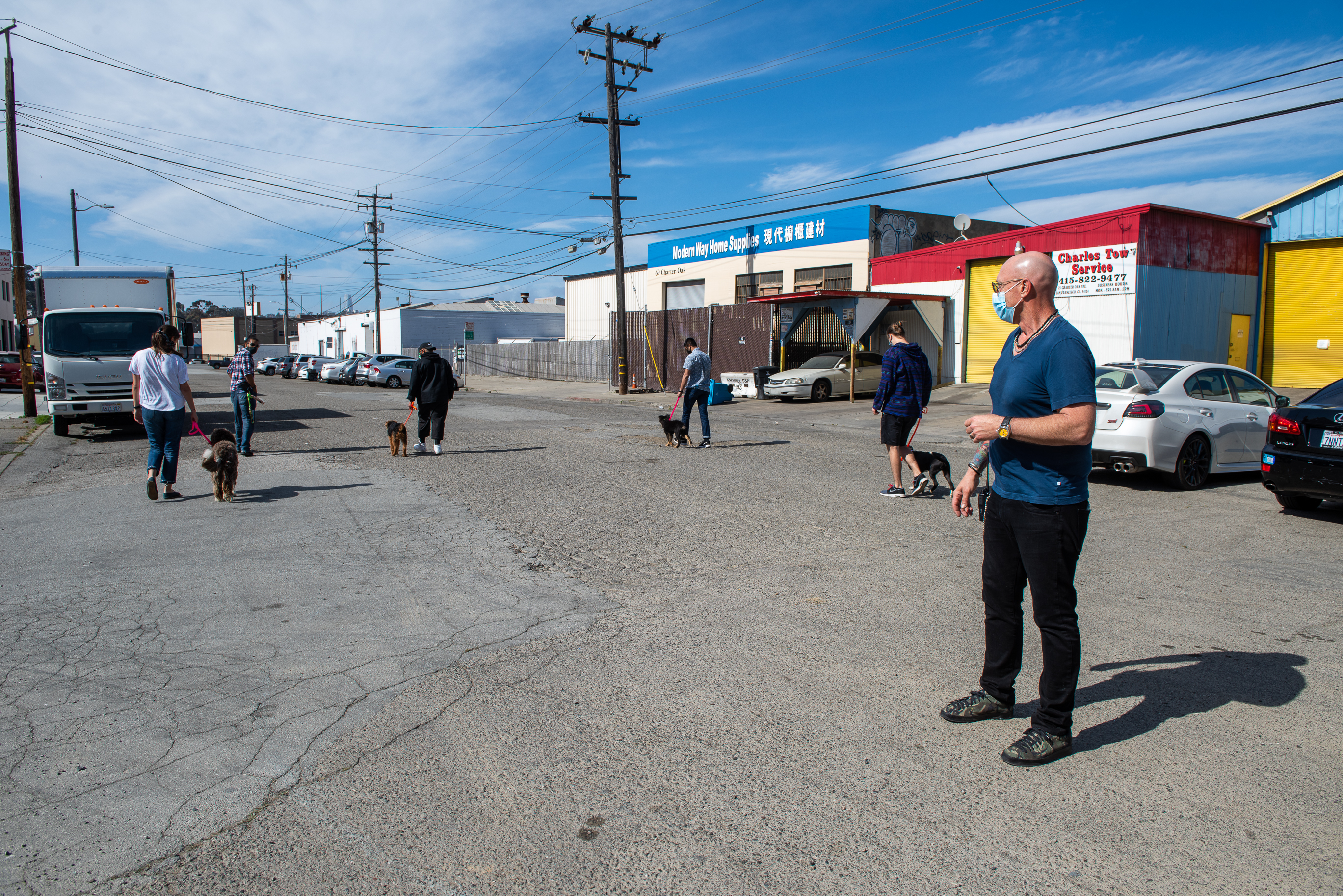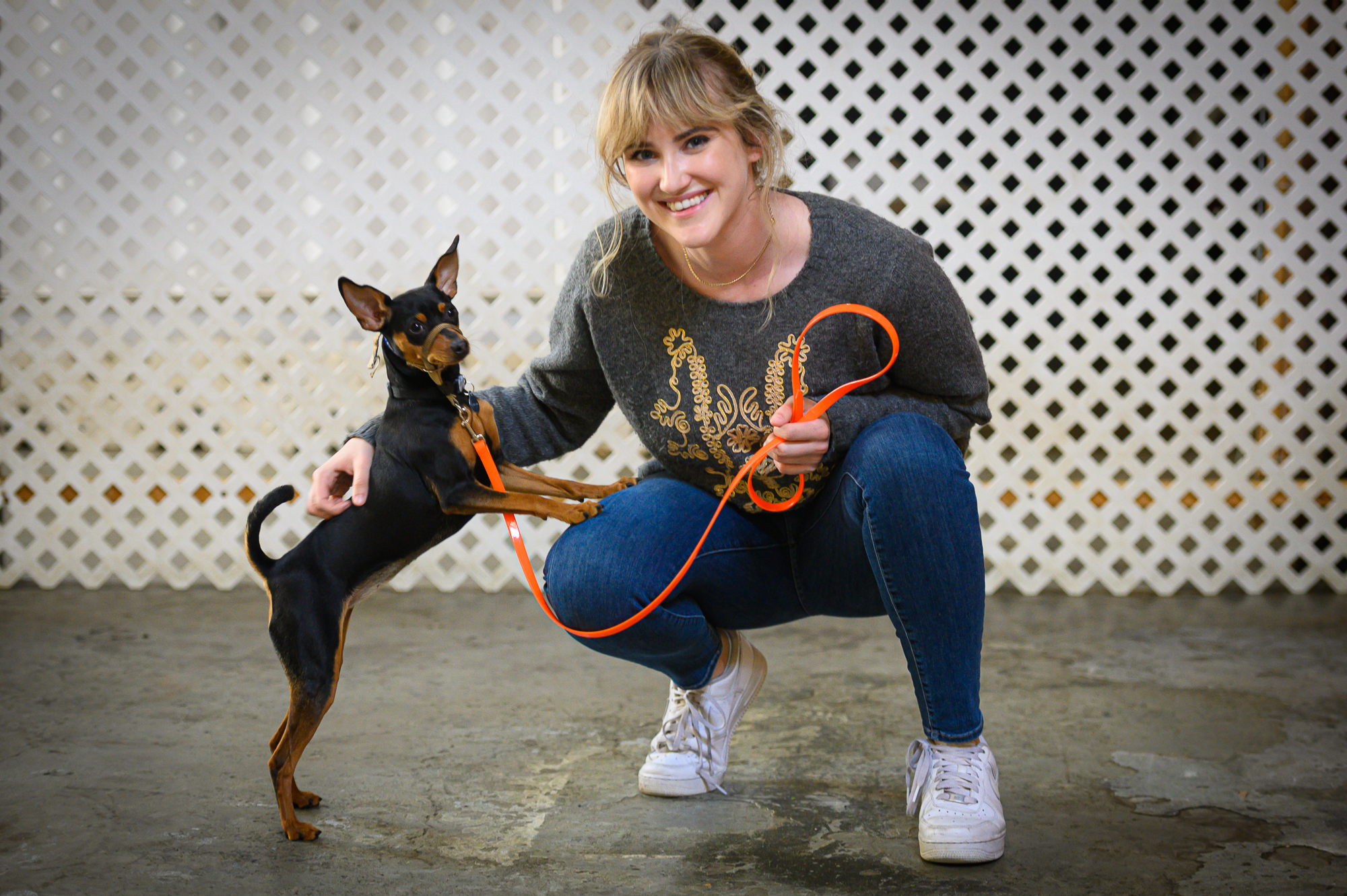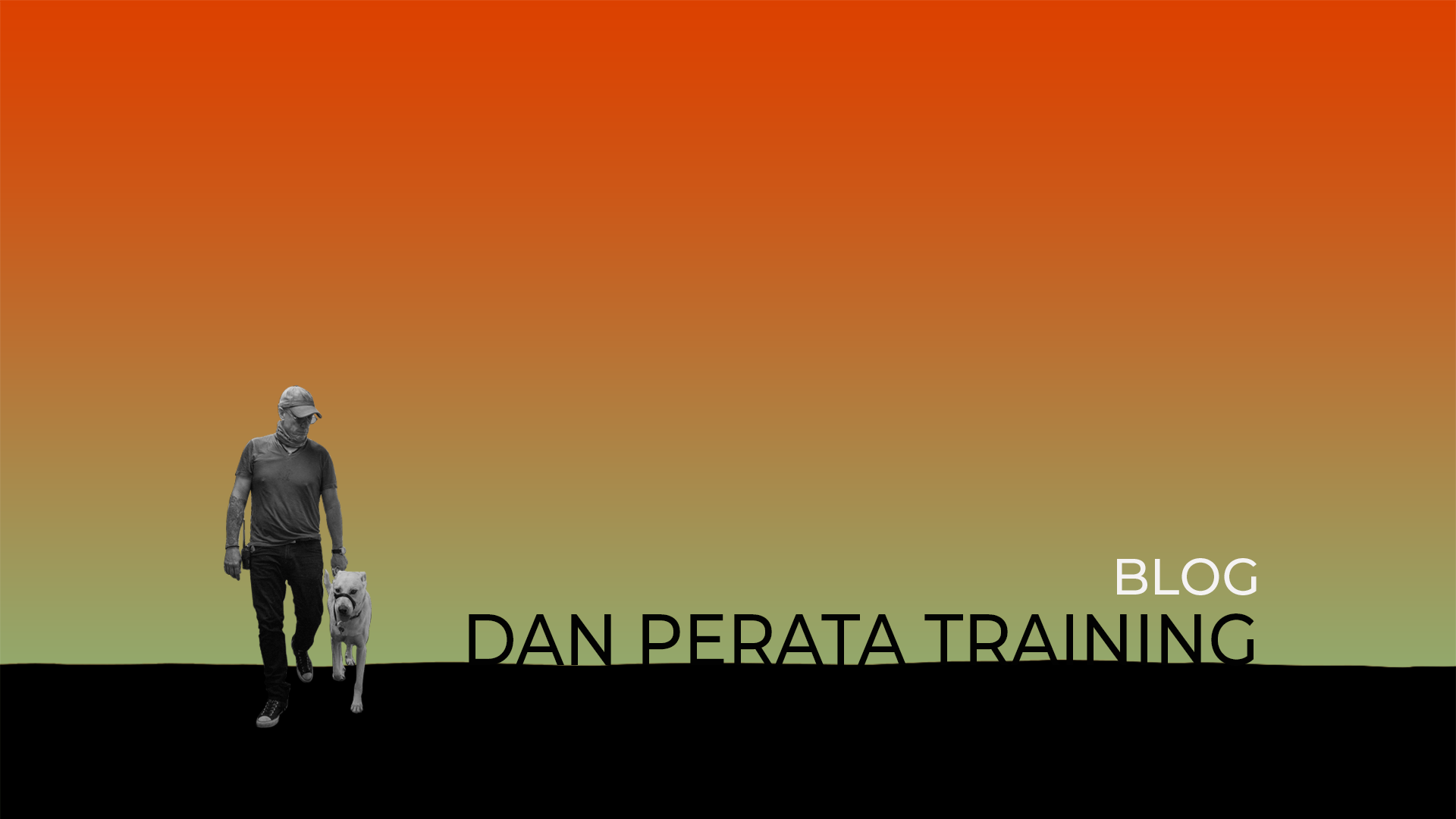



Good day, my name is Dan Perata, and the plan here is to communicate useful content as often as possible, covering all areas of training and dog ownership. We will be discussing canine energy, separation anxiety, variations of aggression, introducing new pets to kids, and new kids to pets. Communication, crate training, housebreaking, leash reaction, and an expansive and ever developing multitude of other topics! Got a subject you would like to see covered? Drop us an email request at blog@danperata.com and we’ll do our best to include. I truly look forward to being a comprehensive resource of all things dog!!!
The first area we are going to cover is the walk. If you are an existing client, or plan to be one soon, you will hear me say, “It all begins with the walk”, followed by my second favorite saying, “Relax and keep moving!”
The most common complaint that I receive from prospective clients is that their dog does not walk well on the leash. You know why? Because going outside of its home on a leash is a scary thing for a dog at first. And if it doesn’t trust its owner’s decisions, it will rely on its two main lines of defense—flight or fight!
Having your pet walk comfortably on a leash next to your side is not only a great pleasure, but is a cornerstone to your dog’s behavior and training process. You have to keep in mind that you are constantly having a conversation with your dog through the leash. Specifically, your dog communicates on energy and smell. Because of these sensory perceptions, your dog is constantly reacting to its environment. How many of you can relate to this scenario? Go out for a walk, and your dog is out in front, pulling you down the street, nose to the ground sniffing everything and anything, constantly scanning its surroundings, and no longer following your commands. Sound familiar? Your dog is walking you! Allowing (insert name here) to lead inadvertently puts him in charge! This behavior leads to a host of other more severe issues, including separation anxiety, leash aggression, and lack of recall, to name a few.
So why does your dog react this way to the leash? If the leash is taut, a few things are happening: 1. Your dog is not paying attention to you, and 2. He perceives that leash as negative energy and a reminder that he cannot use his first line of defense, flight.
To correct this behavior, we will take a walk together and work on leash skills, which train both you and your dog.
Remember, you always want to make the decisions for your dog, not the other way around, and the leash is the first place to start!
Welcome to the path!!!
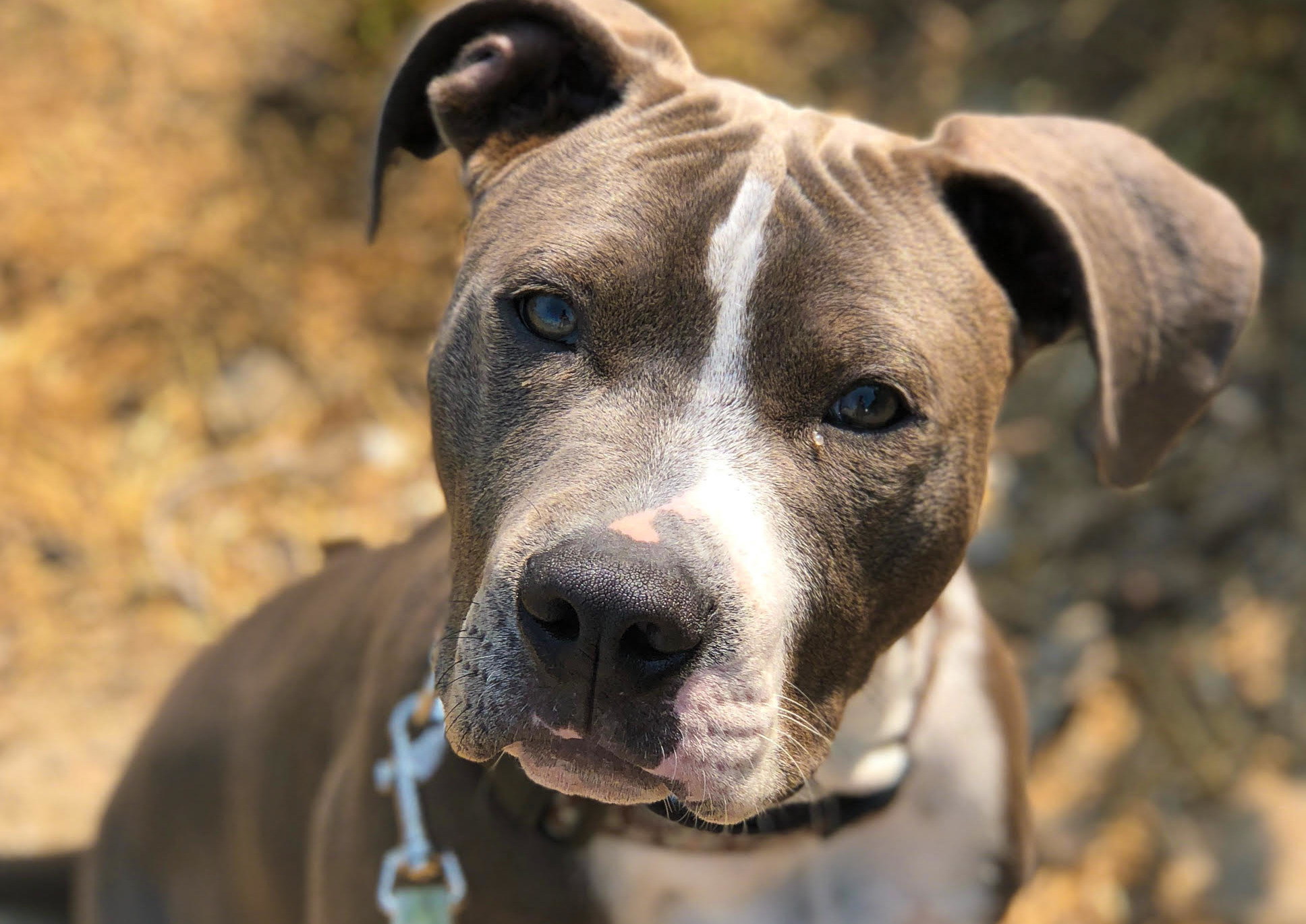
He was the first, the first of any dog I’ve had to let go, and the landscape of grief is unfamiliar terrain to me. It’s a strange, sometimes terrifying place and I’m here without a flashlight or good boots and I’m just doing my best to stumble through. I think I’m doing better, but just when I’m feeling really solid a friend will send me a text or something will come in the mail that sends me into a gale of tears again. I’ve cried every day since he died, sometimes endlessly, other times just a few pretty tears as I’ve maintained control, and some strange part of me fears that the day I don’t cry is the day I’m disloyal to him.
I lost him several weeks ago, amid an already chaotic and crisis-laded period, and his sudden death was a one-two KO punch that left me breathless and stunned and longing for the ability to lie on the floor motionless and try to remember how to breathe, but instead I was in the position of being unable to stop, of having to carry on, go to work, pack a suitcase, ready my other dogs to go into boarding, to get on a plane and go to the other side of the world, all within a few days of his passing. I had no time to mourn at our home, so my mourning was done on the road, as I wandered the islands and cities and holy sites of Norway, leaving pieces of him scattered across the Scandinavian landscape.
Since the day he died I’ve wanted to write it all down, everything that I can remember, so that I won’t forget those days, or him – as if I could ever do that.
Benito was the bossiest, scrappiest, most chutzpah-filled 3-and-a-half pound Chihuahua you’ve ever met. He arrived on my doorstep in 2004 an emaciated two-pound pathetic creature in need of neutering and extensive dental work, and from day one that tiny dog didn’t take nothin’ from nobody, as my dear friend Erin said. He ruled the roost and put his big sister, three times his size, right in her place, and he never stopped.
He was the best worst dog ever. He was a bad dog, and we called him a little fucker and asshole and jerk all the time, partly because he was so pushy with the other dogs, but also because he impulsively peed a fragrance reminiscent of a musk ox that would peel any varnish off the floor if left longer than one minute, and because he would not shut the hell up when other people came over. At the same time, he was often everyone’s favorite, not just for his diminutive stature but also for his charm and pure charisma. He was a very loving little guy and fit just perfectly into the crook of my arm (so he ended up getting more cuddle time than any of the others purely due to anatomic advantage). He was as sweet as he was sassy and he was adored by many, even being a minor celebrity at the vet’s office – ‘Benito’s here!’ the techs would shout when I brought him in for appointments.
About five years ago, when I bought my first home, his hair started lightening. In the ensuing years, he went from a silky chocolate brown to a thin, brittle white. His eyes clouded up. The cough he’d always had grew worse, but his spirit never dampened. In the last year or so I knew he was ‘winding down’ and I often picked him up and told him how much I would miss him when he went. I took him for a dental surgery last June and sprung for a complete blood panel and all systems were go – he was old and his eyesight sucked, but he was still chugging along and doing ok for a 15-year-old Chihuahua.I joked to my goddaughter that I had the world’s first immortal dogs. Now I eat those words.
On a Sunday night in August, while I was deep in the throes of a vicious upper respiratory infection and five days before my plane was to take off, he came into my office and stood at my feet while I was in the middle of a packing frenzy. Ordinarily I would have shooed him off, but something prompted me to pick him up and lay him on the fuzzy sheepskin that covers my office chair, bundle him in a blanket, and pet him periodically for the next couple of hours as he snoozed and I packed. I’ll be forever grateful for that inner voice, and for the foresight to take a picture of him when he dozed. That night he let me sleep through the night – which had become more unusual as he had begun to wake up and cry to be picked up in the wee hours – but when I heard him wake up and go to his water bowl I heard an unusual ‘thunk’ and looked over the edge of the bed to see him lying on his side in a pool of what I figured was water from the water bowl. I scooped him up and cuddled him and realized it wasn’t water he’d slipped in on the floor but pee, and I knew something was wrong enough that I called my wonderful mobile vet and booked an appointment for him to come see Benito in a couple of days.
Then I had to get up and go to the hospital to be checked to make sure I didn’t have pneumonia and, once cleared, I came home and did something I’ll always regret – I got dressed to go to a job interview in the City. I texted two friends and said I was considering blowing off the interview to stay home with Benito and they both said to go – so I bundled Benito up on the couch with his brother and sisters, and I left him. I knew from the moment I walked in to the interview I didn’t want that job, and then of course when it was over I went to a friend’s to kill time while the impossible rush-hour traffic died down. When I got home that night at around 7:30, I found Benito on the couch right where I’d left him. He stood up and stretched and started to walk to the little dog stairs that lead down to the floor.
“Do you want an airlift, Little Buddy?” I asked him, and picked him up and placed him in front of his water bowl. To my horror, he swayed on his feet, banged his tiny apple head into the bowl and collapsed on his side. As I reached for him, he peed a huge arc of urine into the air and that’s when I completely lost it – I knew he was dying. I scooped him up and put him in the crook of my arm and with my other hand placed what has to be the most embarrassing, ugly, hot mess of a phone call I’ve ever made to my vet and asked if he could please come tomorrow because I thought it was his time. Then I took him to bed and slept with him cuddled up next to me for what was his last night.
In the morning I dressed him in the little red sweater he’d worn his entire life and carried him to the park. We lay in the warm morning sunshine and as he closed his eyes and breathed rapidly I told him how loved he was – how Mommy loved him, his Aunties Erin and Natasha and Sydney and Bernie and London loved him, and his Uncle Dan and everybody who ever knew him. Then I carried him home, stopping to pick some rosemary and wildflowers in the neighborhood, and we lay in the bed and I began the measuring of time – three more hours, two more hours, one more hour – that has never stopped.
He hadn’t wanted to eat the night before and seemed disinterested in food, but a little voice in my head said ‘try salami,’ his lifelong favorite, so I did, and to my joy he ate an entire slice. That brought happiness to my heart, then and now, and I still joke about it. My friend Lisa from work came over, with a bouquet of flowers (my only request) and hung out with us until Dr. Ken came and we began the process of helping him cross over.
The vet took one look at him – and, true to form, Benito tried to snap at him when examined – and with very wide eyes said ‘his tongue looks terrible!” We found he had a serious heart murmur and I was told, ‘If it’s not today, it’s soon,’ and so we decided to let him go. To this day I ask myself if I would have done the same thing if I weren’t leaving the country in a few days, but I was so caught between the desire for another few days with him and the horrible fear of having him die organically, but in pain, as a friend of mine went through with her little terrier a couple of years ago. It was an agonizing choice.
The process itself was simple. I held him curled up in a blanket while Dr. Ken gave him a shot that anesthetized him and send his brain off to la-la land. While he drifted off we stood in front of the large window in the dining room that looks out onto the street, the window he used to constantly pester me to pick him up so he could look out of and bark at passerby, and I repeated the list of all the people who loved him and told him what a good boy he was. My friend Lisa had the presence of mind to take a picture right then and I thank God she did because it’s so touching – our last picture, and he looks so happy. Once he had no reactivity, we gave him the shot that stopped his heart, and my boy was gone.
My vet helped me curl up his body and I wrapped him up in a shell-patterned towel that I inherited from my late grandmother and gently laid him in the only appropriate box I could find – a green Ikea organizational box (I have stopped more than once to think ‘could you have imagine when you bought that that you’d be putting Benito’s body in it?’), and covered his little body with the rosemary and wildflowers and the yellow Gerber daisies Lisa had brought over. I held that green box against my body – I can still feel the weight of it in my arms – until the very last minute Dr. Ken had to take it so he could be cremated.
I kept a brave German face until everyone was gone and then I disintegrated. The following days are a blur. I packed. I cried. I counted time by his death (‘an hour ago, three hours ago, a day ago, two days ago, he was alive, he was here). After two days I finally picked up his tiny bowls (half the size of the other dogs’ bowls). I wailed. I had to go to a meeting at work. I got the other dogs ready to go to boarding. I sobbed. I drank cold medicine and coughed by guts out and went through two full-sized boxes of tissues between grief and sickness, I slept as much as I could and I got my hair and nails done, numbly, and at every stoplight I cried for my little guy. I am not a stoic when it comes to death, it turns out – I am a garment-rending, keening banshee of the most old-world, operatic variety, apparently.
It was too soon to have his ashes back, but I knew I wanted him to go on this trip with me, so at the last minute (literally within an hour of leaving for the airport) I put a tiny bit of the fur we shaved off his paw into a heart locket and put it on and took three of his teeth from prior dental surgeries (because yes, I’m that girl who saves her dog’s teeth) in a test tube with me to the airport.
In the following weeks, I took six plane rides throughout Norway. At liftoff and landing on each one, I held the locket around my neck in my hand. I left his three teeth in places very special to me and to Norwegians, places I hope to visit again and again, and in a fairy tale story, a beautiful man I met in Norway asked me for the last bit of him I had left and so we buried the tiny scrap of fur under a tree in his garden. I realized not everyone takes mourning to this level (‘goddamn, you’re so Scorpio,’ says my Scorpio girlfriend) but to me it was comforting, and necessary. He was a three-and-a-half pound Mexican dog with the spirit of the most ruthless Viking, and so it seemed appropriate to leave a little of him there, in the land of fearless explorers and conquerors, under the watchful eye of his spiritual forefathers.
I’ve been home from Norway for weeks now and the process of grieving and healing continues. I have his ashes back and took peace in sifting the bone shards from the fine ash (Scorpio!). In the aftermath of the horrific fires that devastated the wine country north of me, I gave away as much of my extra dog supplies as I could, but I found there were several things of his I’m not ready to let go of. I have an appointment for a memorial tattoo that will have his ashes embedded in the ink. And still I ache for my little guy, every day I wish for ‘just one more day.’
I asked my friends who have been through the euthanasia of a pet if they feel the same way; if they wonder if they did the right thing, did they put their pet down too soon? Not soon enough? Could any of us have done something differently? I tell myself I could have at least given him one more day. I could have blown off that stupid interview. I could have clued in that his worsening cough was a sign of something serious. Intellectually I know this is useless, and that I must find peace in the fact that he had a beautiful, painless passing in my arms, not alone in boarding or at home without me or under the wheels of a car or worse. I’m grateful he told me it was time to go before he went away to ‘Dan Camp’ for a few weeks, that he knew I was leaving and so it was time for him to go with me, in spirit if not in body.
I am grateful I have a vet that makes house calls, and I’m grateful I had at least put enough thought into it beforehand to be able to give him some beauty and dignity in his death. Yes, I wish I had had a few more days, I wish I’d had a more beautiful box to put him in, I wish I hadn’t had to get on a plane a few days later and choke back my tears over the Atlantic, I wish I still didn’t miss his tiny clicking footsteps and I wish I’d never, ever had to say goodbye to that tiny little boss. Yes to all of those things, it’s true. I miss my boy – I don’t think I knew until he was gone that he was my favorite – and I always will.
If I can offer any advice, it’s just the following: think about your friend’s passing, whether from old age and/or disease or an unexpected cause. Have a plan for what you want to do – I truly recommend having a vet make a house call if you can – I believe it reduces stress for both you and your pet. Decide if you want to bury or cremate your friend, and how you want to treat their body prior to either. Pay attention to signs your pet is weakening or ready to go, and please don’t prolong his or her life to where they suffer needlessly.
And here’s what I’ve learned that I want to share most of all – let yourself grieve in your own way. Some people are content to let their pets be buried or scattered in a communal grave, others want a proper burial with a marker, and others want to keep the ashes at home. Some go full-Greek tragedy like I do, others shed a tear and get on with life and are very pragmatic. Some get memorial tattoos, some get jewelry made with cremains, some think that’s just plain weird. Just mourn the way you want to, and don’t let anyone tell you that you’re either too cold and detached or too dramatic and overly attached. Whatever. Grief has a landscape as varied as that of the earth itself, and you have to walk its geography in a path that gets you where you need go – for me that was scattering teeth, getting tattoos, sifting ash from bone, and writing these words. I hope they help you, and me.
In memory of Benito M., 2002-2017 ‘He Didn’t Take Nothin’ from Nobody’

The rise in popularity of the positive reinforcement training fad has coincided with an increase in medicating pets for anxiety and undesirable behaviors. The philosophy at Dan Perata Training is that dogs should be medicated for health issues such as worms and other parasities, antibiotics for infections, and medications for cancer and other long-term illnesses. A dog should never be prescribed psychotropic drugs because it's an easier solution than committing the necessary time associated with proper exercise and training. The drugs only mask the behavior; they do not change it.
For pet owners who work with a trainer and do not see results at the end of the training, do not assume that your dog's behavior cannot be fixed. If that trainer says that the pet does not respond to training and recommends medication, get a second opinion! Seek out a different trainer before giving a pet medication that might make him always lethargic and drowsy.
Very few behavioral problems require drugs; that's a short cut. Too often those unsure of how to deal with a pet's behavior resort to psychotropic drugs. In reality, the issue is poor training, or too much emotion being transferred from owner to pet. Owners sometimes treat a dog like a friend or a child, or unknowingly transfer their own anxious behaviors to their pets. This transference of behavior happens because dogs try to imitate human behavior. Some dogs are leaders, while some are followers. Some dogs are confident, and some are not.
We have had several concerned and frustrated pet owners turn to us after working with other organizations for many months. They have described unsuccessful training sessions and ultimately the medication of their pets that did not lead to any improvement of behavior. In each case once the dog was in training here at Dan Perata Training, the dog was carefully weaned off of the drugs, trained with our in-house method, and the behavior improved over time with the use of consistent structure and communication. We stress the words "over time" because no method of behavior modification is instantaneous. Be very wary of any trainer who suggests that a severely challenging behavior can be changed without hard work and dedication to the training method.
One aggressive dog that we worked with spent 16 months in an SPCA positive reinforcement training program. When the training didn't work, the trainer said that the dog could not be retrained and recommended heavy doses of medication. The client reached out to us and when we first met with their dog it was so severely medicated that it couldn't walk. Our first step was to work closely with a veterinarian to decide the best way to wean the dog off of the drugs. That alone took five and a half weeks. Next, we worked with the dog to lessen its aggressive behavior. By the end of training, the dog was able to socialize in our friendly group of dogs. Again, nothing happened instantly, but the progress we made with this dog was REAL. No medication Bandaids for the aggression. We truly modified the behavior.
There are two immediate actions that can be taken to ensure a healthy, happy pet and overall family experience. First, employ consistent training. Whether a hand gesture or a voice command, make sure everyone in the household uses the same cues with the pet. When one person allows a certain behavior and another person discourages it that might confuse a pet and cause anxiety. As mentioned before if an issue arises that you cannot fix at home, don't wait and see what is going to happen. Find a trainer to help you. Second, make sure your pet is getting enough exercise. A good run or quality playtime at the park or in the backyard can lessen anxiety and stress. It is often calming for the pet and may produce a naturally tranquil state.
If exercise and extensive training are unsuccessful in addressing a pet's issue, an owner might try a natural alternative, such as Cannabidiol (CBD) products, in combination with an exercise routine. CBD is a naturally-occurring compound from the cannabis plant (hemp). CBDs have provided some relief for pets with pain, tumors, aggression and anxiety among other conditions. Again, we do not advocate for any type of medication for behavioral issues as a permanent solution. If you want to try this route, do your own research, and have a conversation with your trainer and veterinarian about pros and cons of this form of treatment.
It can be difficult to train a pet, especially those with challenging behavioral concerns. For the health and happiness of your dog and your family it is important to address the root of the problem and not just temporarily suppress the symptoms.

It’s been a while since our last blog. We have experienced a lot of growth with our daycare, boarding, and training services, which has also led to us also welcoming more employees. As the company has grown, our staff has expanded their capabilities and taken on new challenges. In the process, we fell behind in writing new blogs. I’m happy to share that we have compiled a list of topics that the staff and myself are eager to cover in upcoming blog posts. Thank you for trusting us with your dogs and for playing a role in the growth of Dan Perata Training.
There are differing views on positive reinforcement or the use of treats to train puppies and to change the behavior of a dog. I do not believe the use of treats is the answer. Treats are a temporary band aid, the use of food is a lure (bribe), it is only management of the situation in the moment; it isn’t actual training. Once you stop giving the treats for a particular behavior or command, such as “stay,” a pet will most likely stop obeying because the lure is no longer present. There are also negative consequences to using positive reinforcement for every training scenario. After all, positive means to add, in this case it increases or reinforces a pet’s behavior. If a child ran into the street, would a parent reward them for it? No. So, why should a dog receive a treat when it does not respond to a command or it jumps on a person to greet them? It shouldn’t.
A properly cared for, well-fed dog will not be more interested in a treat than chasing a bird. For lasting results, provide pets with clear structure and communication. Dogs make associations and respond to cues, whether a hand gesture, a sound or a voice. Best methods for communicating with a pet was discussed in a previous blog, it is the foundation of training, and it bears repeating -- dogs have capacity for associating words with things or actions because they observe and remember patterns. Positive reinforcement includes petting your dog, spending time with it, taking if for a walk, to the park, or giving it a ball or a toy.
A dog will remember what time you wake up in the morning, make coffee and let it outside. If you try to “sleep in” one day, your dog will most likely try to wake you up anticipating your usual pattern. The verbal obedience commands “stay” and “here” are another form of a pattern, they are repetitive words associated with a specific action. Yet dogs with hearing impaired owners or pets that are deaf communicate effectively with their owners through energy. Although pets learn words through verbal language cues, they predominantly rely upon human energy to discern what is being asked of them and whether or not the person means it. An owner’s non-verbal cues like body language, hand signals, eye contact and energy are far more effective at communication than verbal language.
Use your body language and energy to train a pet. If you enter your home and pet a dog while saying “off” or “down,” that is sending a mixed signal to the animal because your increased energy and body language are encouraging the behavior. Instead, enter the home, get settled, and reward the dog with petting once it is sitting or lying down. The dog will start to associate love and attention with being calm. In the case of a puppy that likes to get into the trash -- don’t pull it away from the trash; it will do it again. Instead, make eye contact, and when it looks at you walk out of the room while watching and still listening. When you hear it go into the trash use a verbal command or make a specific sound that will be able to replicate. The puppy will associate the command with the action and learn to stay out of the trash.
Let’s talk about discipline…for some pet owners this word has a negative association or is viewed as punishment. Discipline is necessary in life, for a child it could mean doing homework or chores, for an athlete discipline means practice and development. I view discipline as building a foundation through practice of specific cues in order to establish and maintain memory recall in pets.
Imagine your dog has a bad habit or behavior that you want to change. Maybe it jumps on furniture or steals food off tables and counters. You have tried the positive reinforcement of giving the dog treats for not jumping on couches and tables, but the behavior hasn’t changed. Now what?
Recently, I had clients who went to several trainers using treat giving to stop a dog from jumping on the counter to steal food, needless to say, it didn’t work. When the clients came to me they were looking for another method to stop the behavior. The idea was to use an undesirable stimulus that the animal would associate with jumping up on the counter in order to make that behavior less attractive. I used a sound that would produce a discomforting effect, and then supersede the desire of stealing food. In this instance, I had the owners open the back door, put food on the counter, and wait for their dog to enter the kitchen but not look at the dog. When the dog attempted to snatch the food they clapped two lids together once. It immediately got down. Since then their dog hasn’t jumped on the counter or stolen food. The dog remains unafraid of being in the kitchen or going to the backyard through the back door. The association with the sound remains only with the counter. Though some might view this as punitive, I see it as training that does not cause harm to the dog and redirects its behavior in a positive way. However, each case is different. It is important to know the dog and if it has anxiety or any other issues when determining a course of action.
In the case of aggressive dogs, they do not respond well to positive reinforcement in the form of treats, because they are focused on the escalation of the situation. Give the dog a treat, and it’s now in charge. For these types of cases, changing the behavior only happens by teaching the dog that the undesirable behavior will always produce a negative result. Instead, the use of leash correction, redirection, blocking or overshadowing reinforcement is necessary for lasting results.

You've got a new puppy and you are looking forward to many happy years of bringing your dog with you nearly everywhere - the dog park, long hikes, friends' houses, road trips, campsites, your neighborhood, maybe even the local cafe where he can loll at your feet and thump his tail charmingly at all who pass by, inviting pats on the head and belly rubs. You envision your dog as an ambassador for his species, a friendly and relaxed diplomat able to charm your friends, other canines at the dog park, children and maybe even - gasp! - cats (perhaps there is hope for world peace, after all).
So how do you bring up your pup to become this social butterfly, this gracious and amicable friend to all? You might think it's very simple and only a matter of giving your new puppy exposure to as many adults, children, and other dogs as possible, letting any and all pet and cuddle her or engage her in play. Surprisingly, you'd be wrong, according to San Francisco dog trainer Dan Perata, a canine behaviorist with 25 years of experience coaching people - and their dogs - on the nuances of good canine citizenry.
When it comes to the dog park, it may be tempting to put your puppy down and let him 'make friends' and play with all the other dogs, but the problem with this, says Dan, is that by and large the other owners aren't closely watching their pets in the way he recommends and the environment isn't nearly controlled enough for a puppy's introduction to the social world of dogs.
"The ideal situation is one in which you can carefully introduce your puppy to a group of other dogs whose owners are equally invested in monitoring and controlling the dynamic," explains Perata, "and where behavior can be vigilantly observed and positively or negatively reinforced as needed." Try asking your dog-owning friends to make 'play dates' with you in a safe space where only your own dogs can hang out and play, thus eliminating the wild card of an unknown dog and its owner. You can also enroll your puppy in training classes, the ultimate in a controlled canine interactive environment, or have them spend time at 'doggie day care,' where professionals will likewise work on proper doggie etiquette with your latest family member.
Nothing attracts a crowd like a cute new puppy. You might find yourself dealing with multiple requests to pet your pup on your morning walk. It might be tempting to smile and say yes and then stop to let your pup greet the stranger, accepting pets and perhaps even putting his paws on the new person. This is a big mistake, says Dan, cautioning "What you've just taught your dog is that you are not his master, but everyone is, and that's a recipe for disaster."
Dan suggests responding to the friendly stranger with an answer of yes and a request that they wait just a minute. Keep walking your dog past the person and then, several feet away, stop, turn, and make your dog sit. Tell the stranger your dog's name and allow her to call your dog to her, something along the lines of, 'This is Spartacus, go ahead and call his name.' Once the stranger calls your dog you may allow it to go greet her while you vigilantly monitor his behavior and reinforce proper manners such as not jumping up and putting paws on others.
"Now what you've taught your dog is that you're the pack leader and that it follows your direction and no one else's," says Dan, "as well as basics such as not to jump up or make overtures to strangers."
These early socialization techniques are only the first building blocks to good dog manners and the beginning of a lifetime of healthy, safe interactions with people, children, and other creatures. Please check back with us for more techniques on socialization and other topics related to happy, healthy, well-behaved dogs.

How do you communicate with your dog? Do you rely upon treats to elicit certain actions? Do you have long verbal conversations? Does your dog ever talk back to you? Most likely not. I like to joke and tell people there’s a reason dogs are called man’s best friend--because they don’t talk verbally! Can you imagine the stories your dog could tell about you? Most of us shudder to think about it.
Over the years I’ve seen many repetitive problems between people and their pets. Most of the issues lead back to a failure of communication. As humans, we rely mostly on verbal communication to express our physical and emotional needs or desires. Often times we try to do the same thing with our pets. Dogs have an amazing capacity for associating words with things or actions because they are a learned animal, meaning they observe and remember patterns. If you get up every morning at the same time to start the coffee and let your dog out, he or she learned your pattern and knows what to expect at what time. If you change that pattern by trying to “sleep in,” your plan may be foiled by your dog pacing next to your bed anticipating your usual pattern. Verbal communication such as obedience commands like “sit” and “here” are another form of a pattern; they are repetitive words associated with a specific action. The average number of words a dog knows is constantly debated; however, dogs who live with the hearing impaired or who themselves are deaf still can communicate with their owners... Why?
The answer is energy. Although your pet may be learning words through your verbal language, he or she is mostly relying upon your energy to discern what you are trying to say and whether or not you mean it. You are the pack leader and your dog looks to you for direction. A wolf or dog pack has a hierarchy. Each member communicates dominance, subservience and direction via body language and energy: stiff legs, direct eye contact, alert tail and increased energy can be signs of dominance or aggression; head down and away, avoiding eye contact, giving space, tail down are signs of subservience. Similarly, your body placement, eye contact, and energy level all tell a dog how it should behave. That is why learning to transfer your energy to your pet in a calm assertive way will illicit the calm focused response you want.
Your non-verbal cues like body language, hand signals, eye contact and energy are much more effective at communication than verbal language. If you’ve ever had children you’ve probably experienced waking up just before them even though they didn’t make a sound. You felt their change in energy. Your dog does the same thing with you. Have you ever witnessed an animal behaving oddly or heard a dog start barking before you felt an earthquake? That animal picked up on the change of energy in the environment. In the last two tsunamis very few land animals died. Birds, elephants, domesticated and non-domesticated dogs were seen moving to higher ground before the tsunami hit. They felt the change in energy and knew how to react to it. The same thing occurs with the energy you project. The energy you give off is felt and interpreted by your dog. Maybe your pet sits by the door before you go on a vacation even though you haven’t even started to pack. How could they know what is going to happen? Your change in energy level communicated your plans to your dog.
Here are some typical examples of communication break downs between owner and pet that can be resolved through learning how to focus your energy:
People who have a skittish or nervous dog tend to directly face and loom over their pet while calling it in a sweet voice. Their verbal language is saying they aren’t a threat, but their energy and posture are communicating something else. Instead, keeping your energy level calm and consistent, making your presence smaller by squatting and turning slightly away with minimal to no eye contact will invite that animal into your space and communicate you are not posing a threat. There is no energy transfer when you make zero eye contact which puts the nervous animal more at ease. You’ve taken a subservient roll with your energy and body language; as a reward, the dog has come into your space.
On the other hand, you may have a confident dog that fails to listen to your commands. Do you tell him or her to stay at the door and the second you open it they bolt through it? When your dog is in front of you it cannot see your eyes or body language and therefore he or she takes off in spite of your verbal cue to stay. When you back your dog away from the door, face him or her, make eye contact and tell your dog in a calm assertive voice to stay, you are saying you own everything behind you. Your body language, direct eye contact and calm energy are communicating your dominance as pack leader. Your dog reads these non-verbal cues and obeys your command.
Another common communication break down is seen in the dog that jumps in your or your guests’ laps. If a dog starts jumping in your lap it’s because you initially transferred your energy to the dog; they cannot handle the increased energy, so they share their exuberance with you. Dogs are learned animals and will repeat patterns until your body language and energy says otherwise. If this behavior has given them attention before, they will repeat it. Use your body language and energy to your benefit not detriment. If you pet the dog and laugh while saying “off” or “down,” your words have no meaning since your increased energy and body language are encouraging the behavior. Instead, stop petting them until they back off and reward them for their calm proper state of mind when they are sitting or laying down. They will start to associate love and attention with being calm.
Proper communication through body language and energy is the key to having a companion who respects and loves you and is a pleasure to be around. Learning how to transfer your energy in a positive way is simple and can be accomplished with time and consistency. Thanks for reading! I’d love to hear your feedback. If you have any questions, or feel you need more hands on help, please feel free to contact me. I operate my dog training business out of the Bay Area and I look forward to hearing from and working with you.
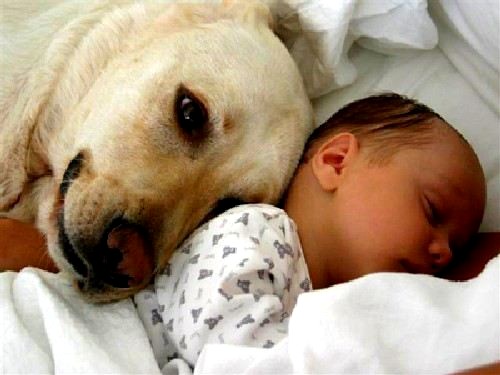
For parents, a new baby is a joyous, exhausting and often trying time. Getting the new member of your family settled into your home requires you to change: your schedule, the layout of your home, your sleep, what you eat, etc. Babies require non-stop attention and are the new focus of your world. Eventually, you settle on a some-what predictable routine again, but parents, especially new ones, are often overwhelmed with their parental duties and lack of sleep from a newborn that needs to eat every two hours. Your patience is thin and your time for other things is limited.
While your once predictable schedule is now in chaos, so is your dog’s schedule. Dogs are predators and thus rely on predictable patterns and pack mentality for their daily routine. You are the pack leader and therefore you establish the schedule. Your dog observes your routine and therefore knows what to expect to happen throughout the day. Whether you realize it or not, you communicate with your dog through your energy.
Have you ever been expecting company and seen your dog on alert or constantly going to the door even though you never even looked out the window? Maybe he or she started barking before your guests arrived. Although you didn’t verbally tell your pet guests were coming your energy and body language did.
As you neared your due date your energy changed. You were anticipating the birth of your baby. Your pet probably became more watchful to see what was going to happen. You went into labor and left your pet at home for a few days. When you returned, you brought a foreigner into the home and your routine changed. Just like humans, some animals adapt to change and circumstances better than others. I’ve heard many people referring to their dogs as their “furry babies” or “four-legged children.” Your dog might be used to having all of the attention and could become jealous or feel scared, isolated, displaced, or threatened by your human child as most of your focus switches to the baby. Your job as pack leader is to make the transition of your new family member into your home as comfortable as possible for your pet; this helps ensure the safety of your child and the well being of your dog. Your dog is struggling to learn the new schedule and adapt to the new patterns, sounds and scents in the household. Understanding your dog’s psyche can help you prevent problems. Not placing the dog in a situation where he or she feels they need to protect themselves can be critical.
I suggest that you help prepare your dog ahead of time for these changes to minimize the shock. Here are some simple, but effective steps:
1. Set-up the nursery ahead of time so you and your pet are prepared for the baby. This will minimize stress for both of you and give your pet a chance to become accustomed to the new layout.
2. Introduce new scents like wipes, diapers, lotions and shampoos to your dog so he or she is familiar with the baby smells and accepts them as part of your household.
3. Make noise with the baby toys. Shake rattles, turn musical toys and mobiles on and off, open and close high chairs and play pens. When the baby comes, the dog will already be accustomed to these noises and less likely be afraid or intimidated.
4. While in the hospital, have a family member or friend take an article of clothing worn by the baby, like a knit cap that was on the baby’s head, to your house and let the dog sniff it; introducing the dog to your baby’s scent ahead of time can make the transition easier.
5. Expect your pet to be curious about the baby and praise him or her as much as possible for their positive reactions. Yelling or being aggressive towards your dog when it expresses interest or disinterest can set up a negative vibe towards your child. Let your pet take their time getting to know your baby.
6. Setting boundaries for your pet is okay. For example, not allowing your pet in the baby’s room or play area is acceptable, but you want to be firm, not aggressive.
7. Let your dog know it can always leave the room or situation if it’s uneasy. Flight, in this case, is okay. This can help protect your child.
8. Try, if possible, to take some time daily to acknowledge, pet, or brush your dog so they know they are still loved and haven’t been forgotten. If you find you don’t have time for a while for your daily walk consider asking a friend or family member for help or hiring someone. Less stress on you means less stress on your dog. Exercise also helps your dog’s disposition and stress level.
I hope you find these tips helpful! A new baby is precious; having synergy in your house is possible. You can have children and pets. If you have any questions, or feel you need more hands on help, please feel free to contact me. I look forward to hearing from you.

What can you expect from working with Dan Perata? Someone who is dedicated to your dog and your family having a successful relationship; A charismatic, funny and very outspoken guy with a singular perspective on working with dogs; Someone who has a lifetime of experience working with animals in a variety of situations, who "gets" dogs on a dog level. As a core volunteer with a local dog rescue, I've met Dan a few times. He has been very generous in providing advice and training to our rescue to help us understand the behavior and needs of some of our more challenging pups. Dan recently gave a group of our volunteers several hours of basic training: how to read a dog's body language, how to provide the essential level of security and decision-making that a dog craves, how to use the gentle leader in a calm and productive way that makes using "prongs" and other "after-the-fact" tools unnecessary, and how to intervene in more serious situations. Dan definitely knows what he's talking about. He understands dogs and loves them. While he may not provide the "positive reinforcement" that some folks have come to expect in the form of treats, he does provide love and cuddles and lots of praise to dogs, but as Dan would say, at the right time. What dogs crave as much as love is a predictable, dependable person who will help them feel secure. Dan is awesome. Thank you for the work you do to help dog families and for for the support you give to dog communities.
We are a family of 6 (kids ages ranging from 4 to 11) with a very busy and loud life. I heard from numerous people that if we get a puppy we will need to call Dan Perata. With all of his exceptional reviews I never doubted Dan being anything but an amazing trainer. My concerns were with my children, and how they were going to be able to reinforce the habits that Dan is teaching our puppy. I expressed this concern to Dan, and he has been incredible accommodating our family. Our puppy goes to Dan Camp during the week, and then Dan comes over to our house to help train our family in our environment. Dan is a funny outgoing person with a big heart, and my children love him! He makes learning fun for the kids, and they never lose interest when he speaks with them. Our puppy is constantly chewing (as most puppies do), and by having her crate trained at such a young age has cost justified Dan Camp! I can only imagine the damage she would have caused in our house! A huge plus to Dan's team is his assistant Vanessa! She is always a pleasure to speak with, and is extremely responsive. This whole experience is a lot of fun, and we feel lucky to have Dan as our dog's trainer for life. Thank you Dan!
Let me start by saying that what Dan accomplished in one hour was nothing short of a miracle. My 1.5 year old spaniel/shepherd mix Kismet is a handful. He's amazingly strong for 35lbs and has a real problem with people coming over to our apartment, and he drags me around on the leash. I've paid good money to two other training programs, and all that happened was sit, down and come, and Kizzy got a lot of treats. Nothing I've tried has helped with the pulling on the leash, or the territoriality. Enter Dan Perata. He taught me how to have people come over and teach Kismet that it's MY home, not his. With a new head collar, Kismet was walking right by my side around the block after only a few little battles. I did it again after Dan left and Kismet was just as good on the walk. He also gave me a great tip to stop him from jumping up on the people he loves. A+ rating!
Our 5 year old rescue pup had always been a nervous dog and had obviously been abused. It took years to help her gain some confidence but then she started becoming dog aggressive. I was heart broken and missed our walks now she couldn't be let off leash to run. To compound the problem she had started acting out in the house also. I received all kinds of advice, much of it over priced, but nothing was working. I felt terrible that I couldn't let her run off leash and worried that this could morph into more aggressive behavior, perhaps towards people. When I called Dan's office Vanessa said that Dan can usually fix behaviors in a 1 hour visit. I was skeptical having been told that I needed all kinds of training and then intense continuing support every time something changed in my dogs life. I thought the price and the time commitment was too good to be true but she did not over sell his abilities. Dan was clear and concise about what we needed. In an hour he trained me, my husband AND our two children how to handle the dog. There were no pinch collars or harsh words. He explained the world from the dogs point of view and showed us just what she needed. After just that one hour she is a changed dog. I almost cried after he left from the relief. Our dog is happier, more relaxed and more attentive than she has ever been. She minds us all now, even the 8 year old! After just two weeks of walking her with the tools Dan showed us she is ready to get some training to get off leash again. After over 9 months of stress, worry and bad advice I am confident that we have turned the corner. Dan's prices are incredibly reasonable for the support he gives. From my research I thought it would cost me three times his fee and four times the time commitment to get this sorted. He has regularly scheduled free group training/walks and both he and Vanessa have been responsive and understanding all along the way. I can't say enough how grateful I am that we found Dan. I am completely confident that we can handle any issues and provide our pup with the very best environment. Thanks Dan!

